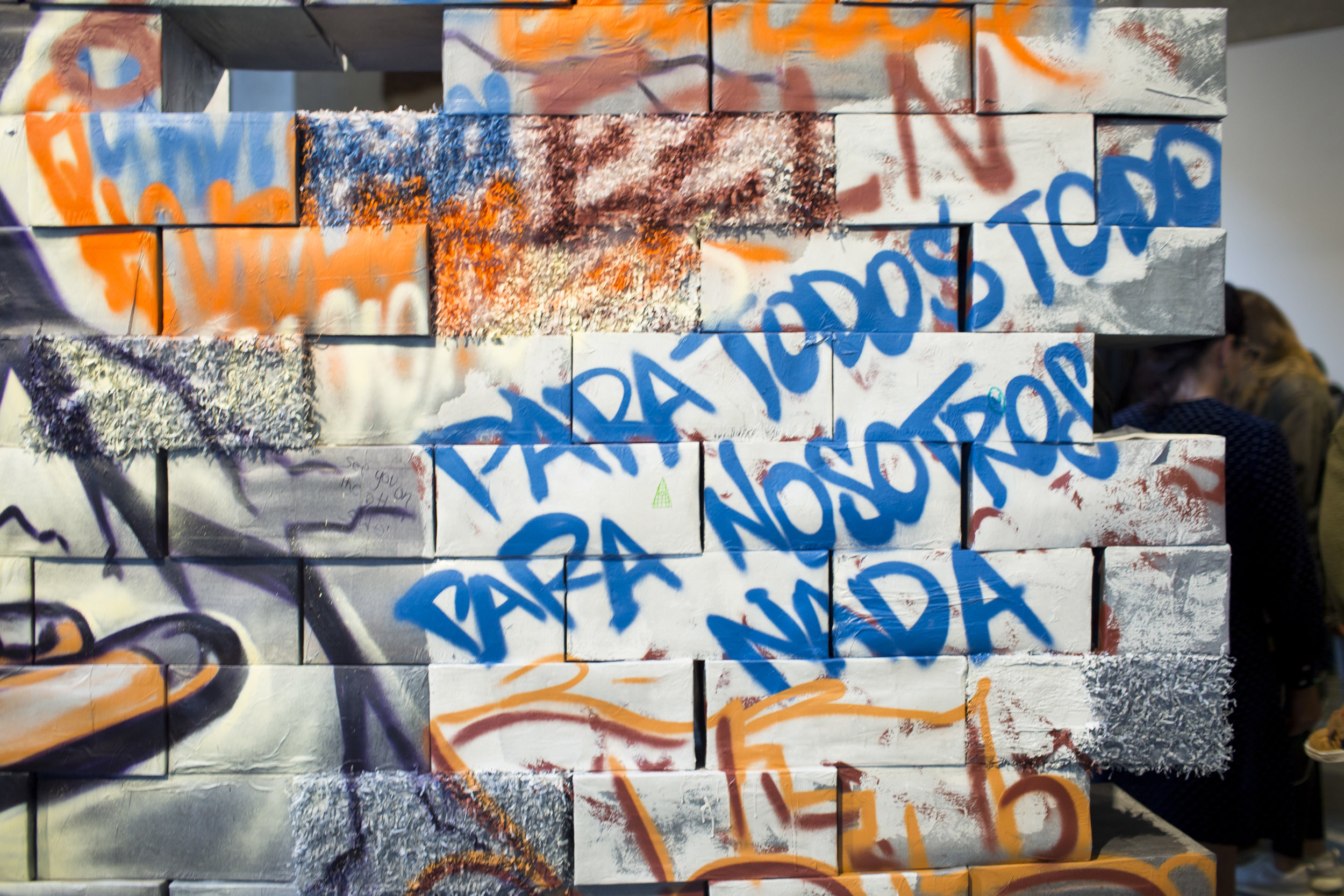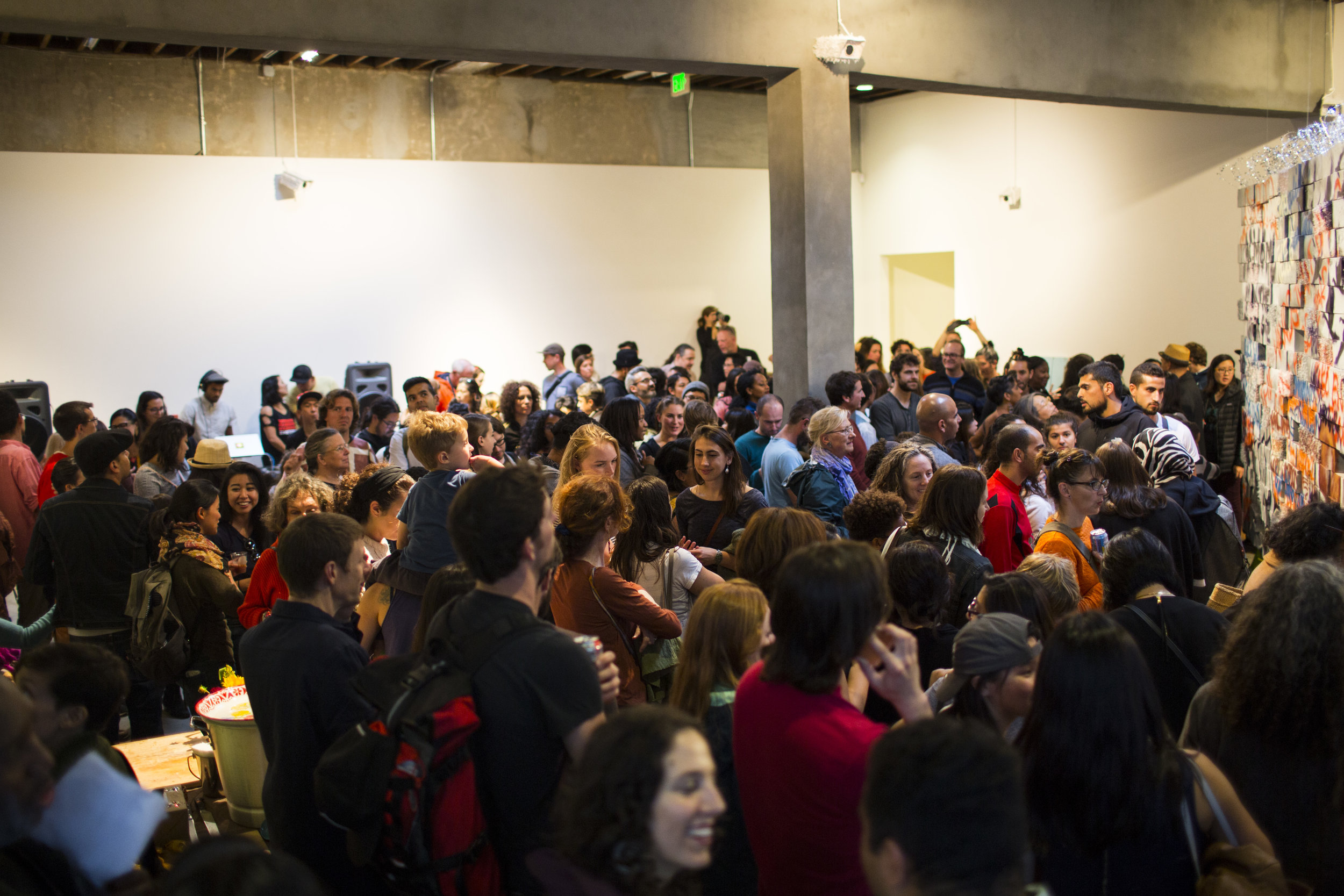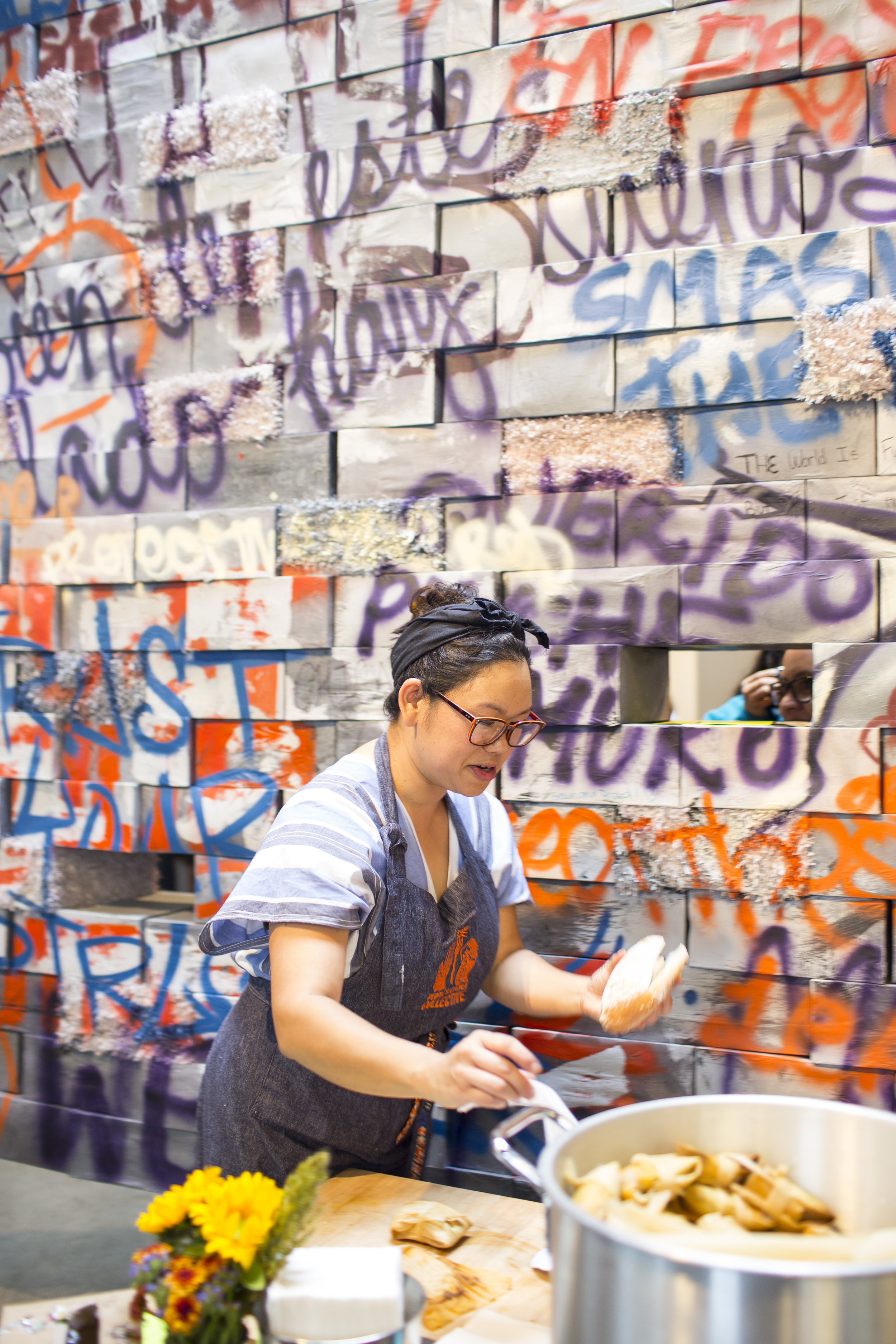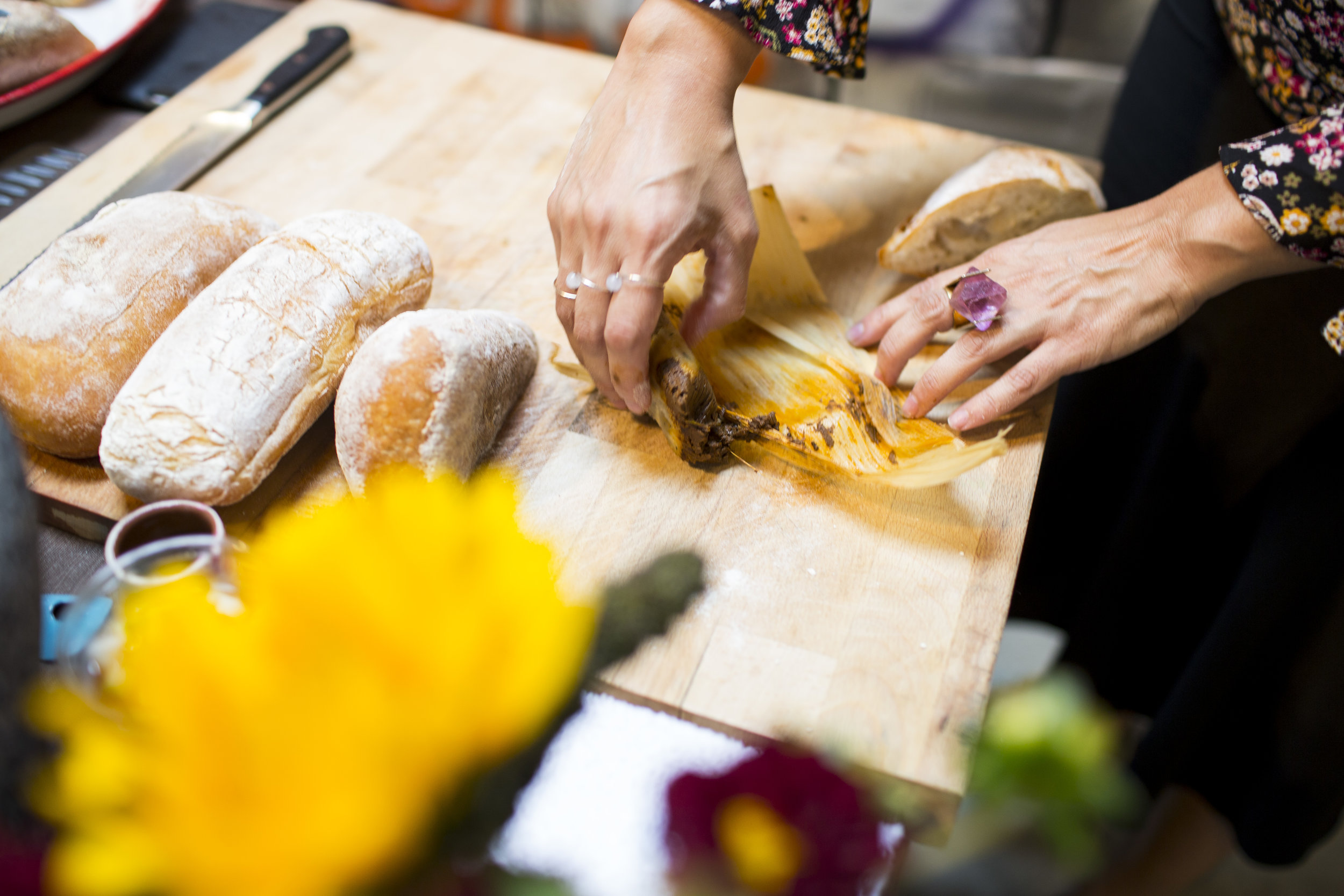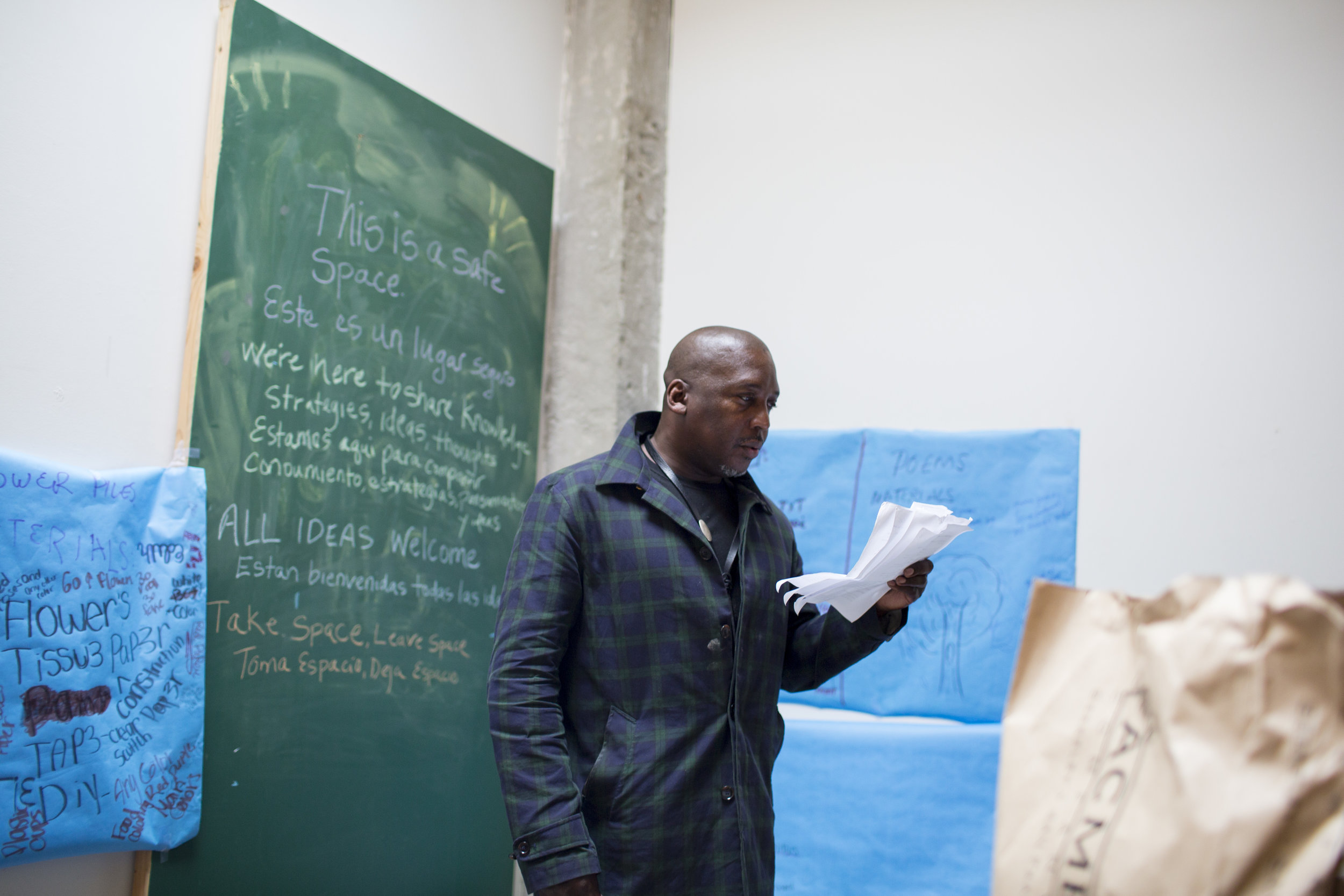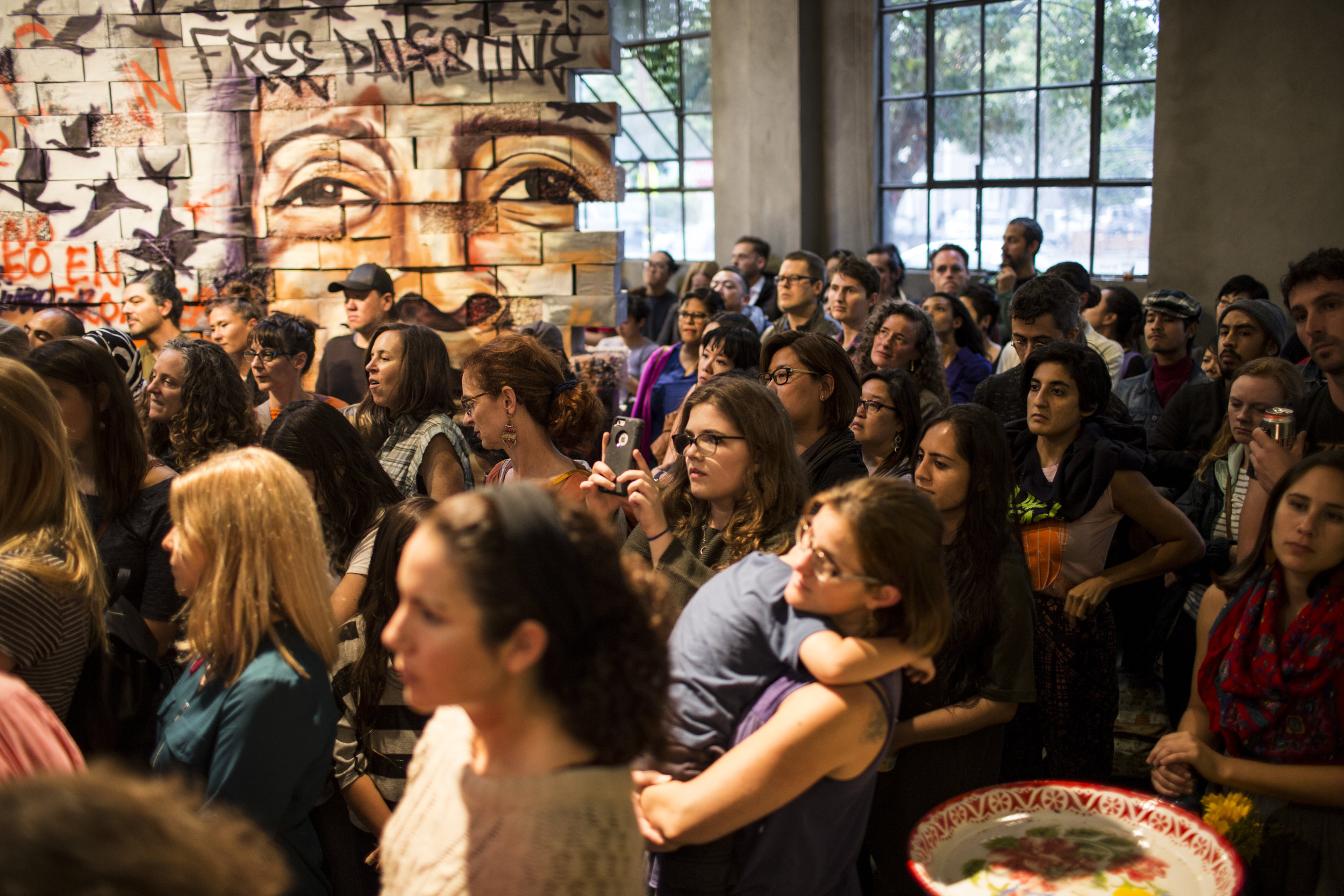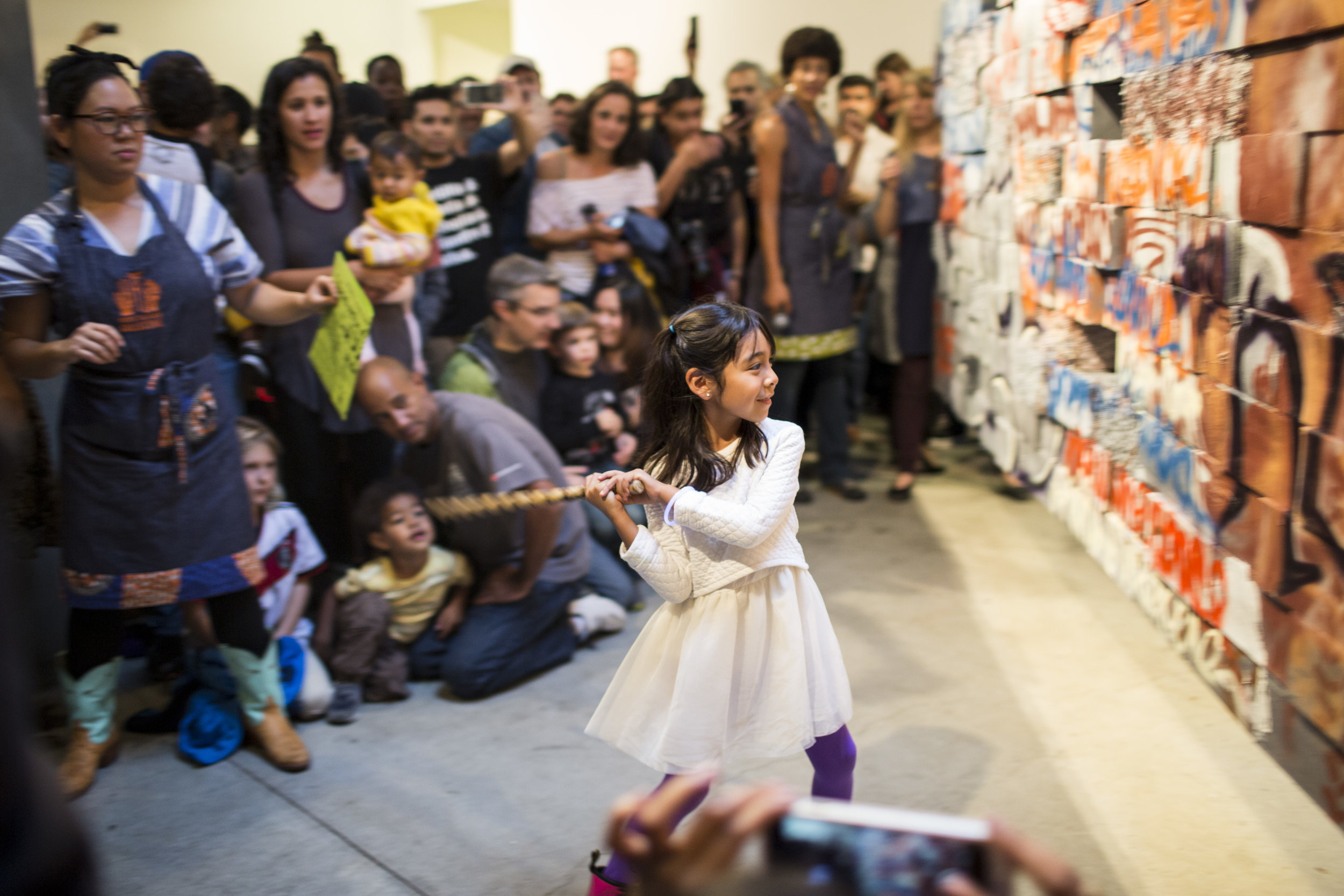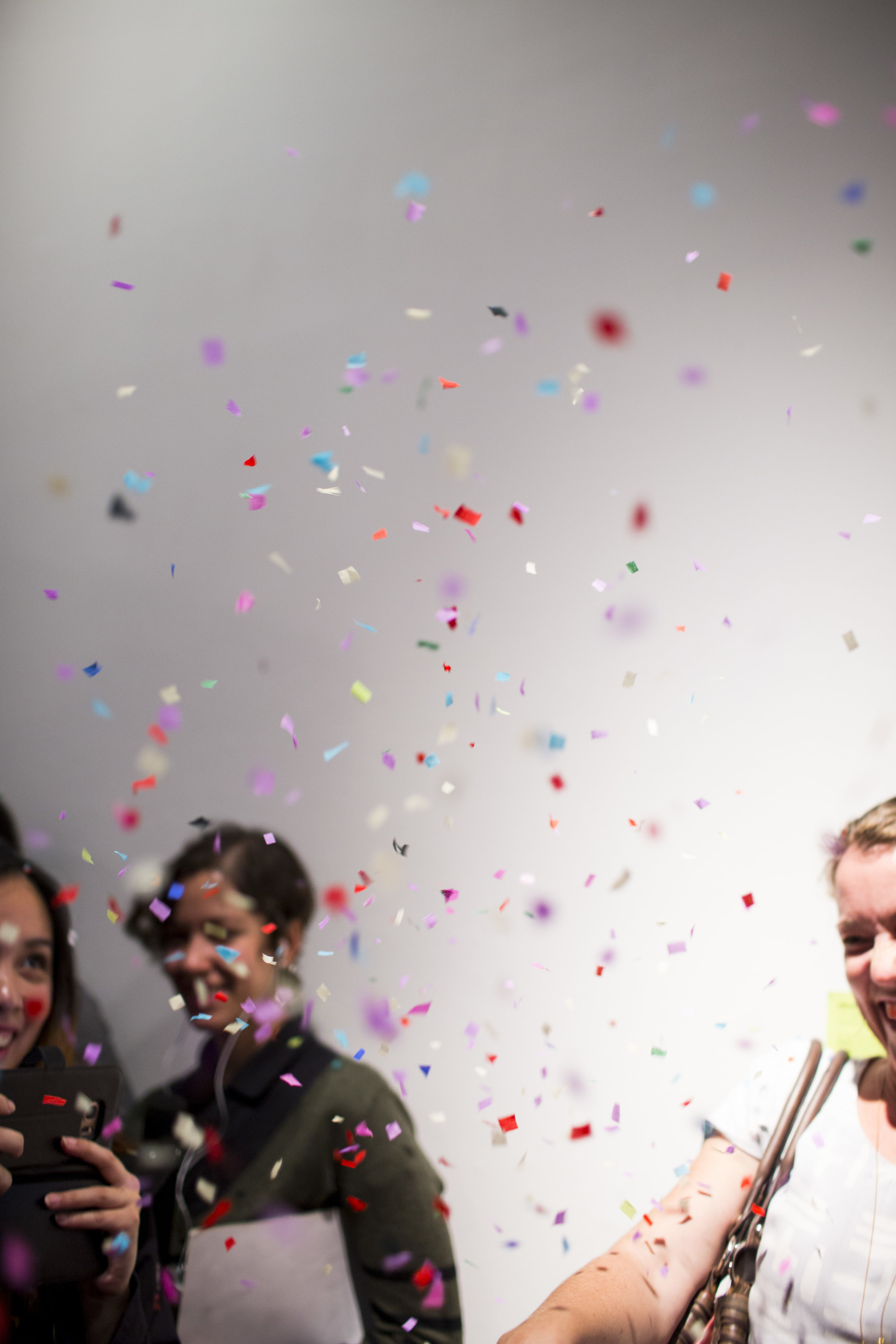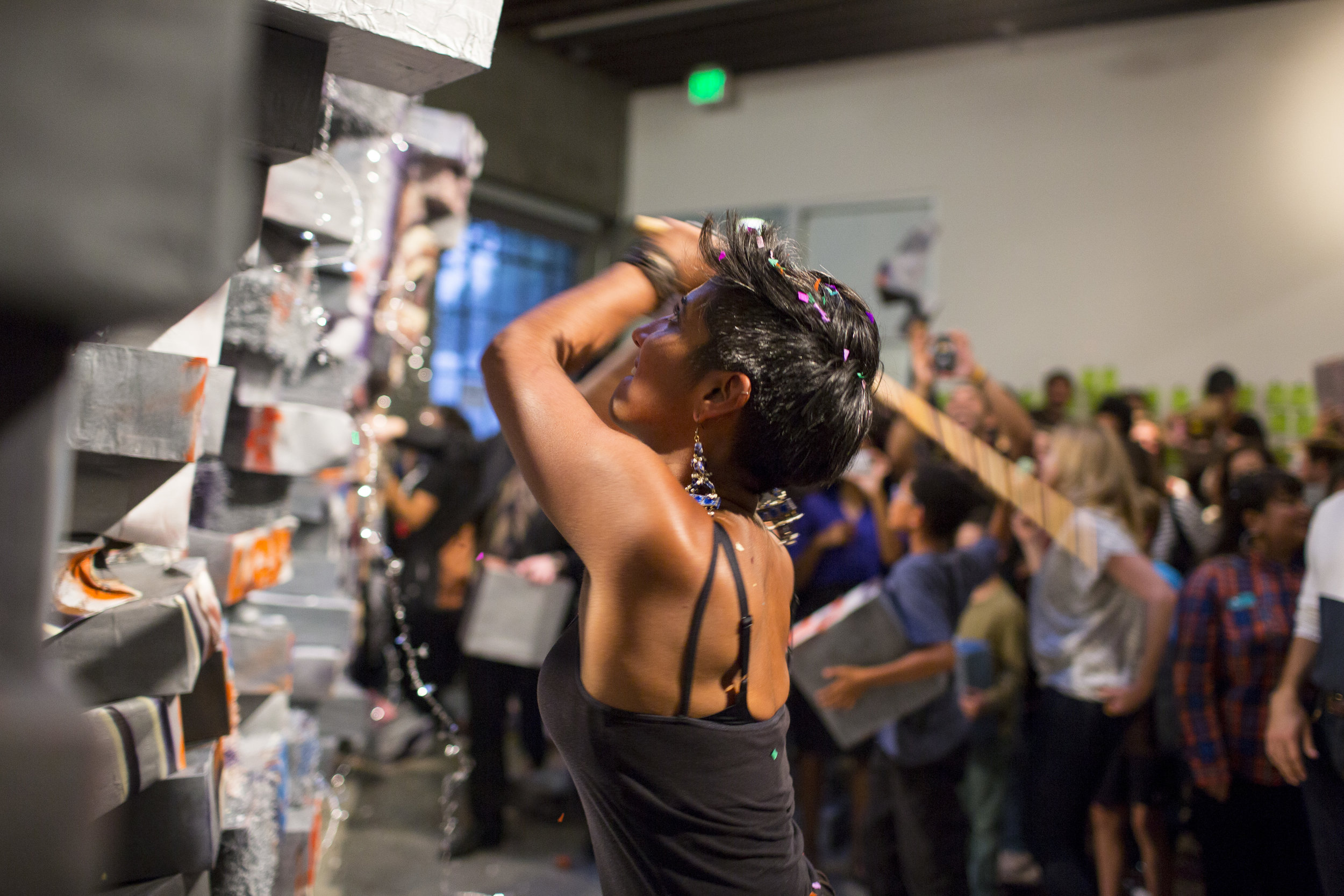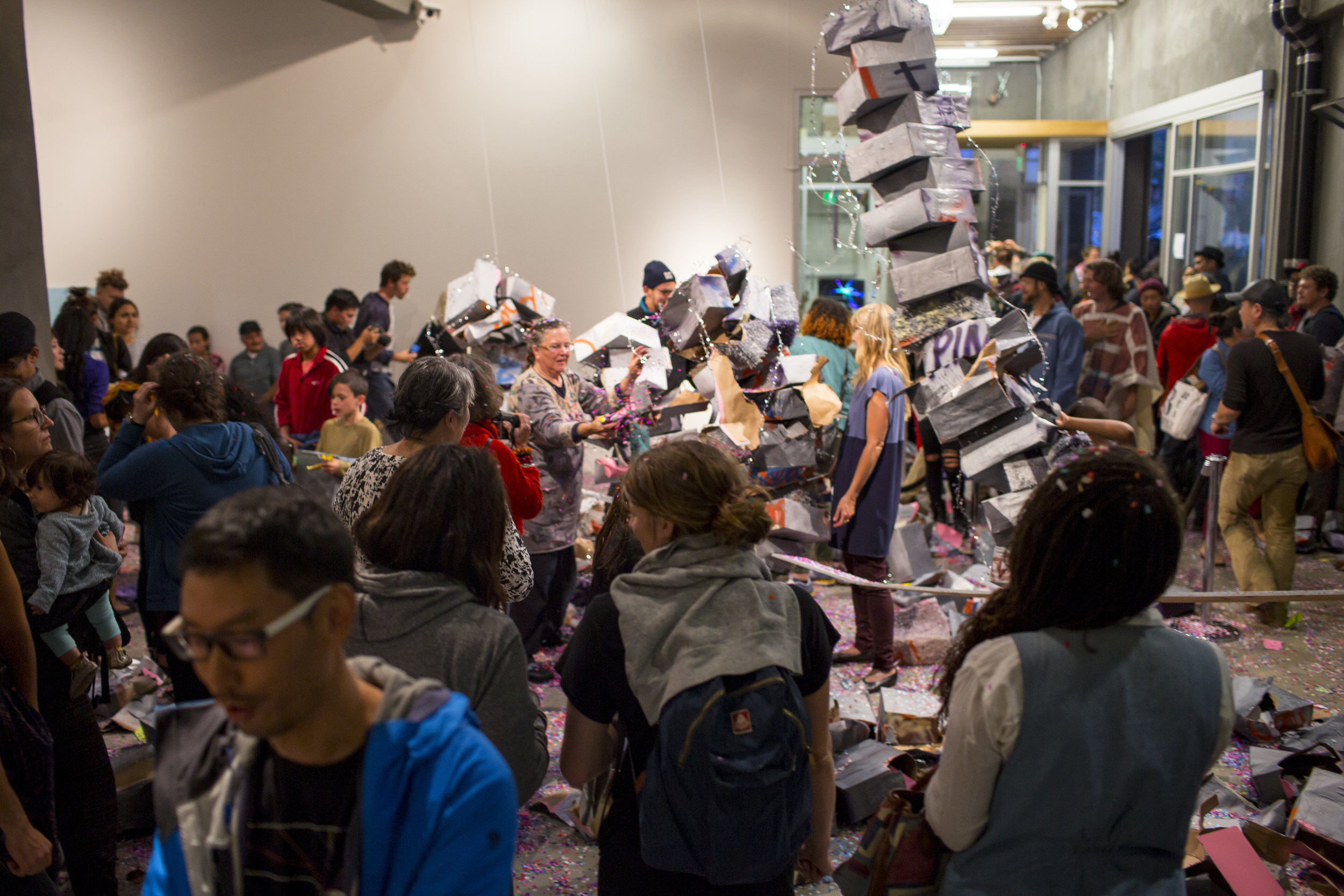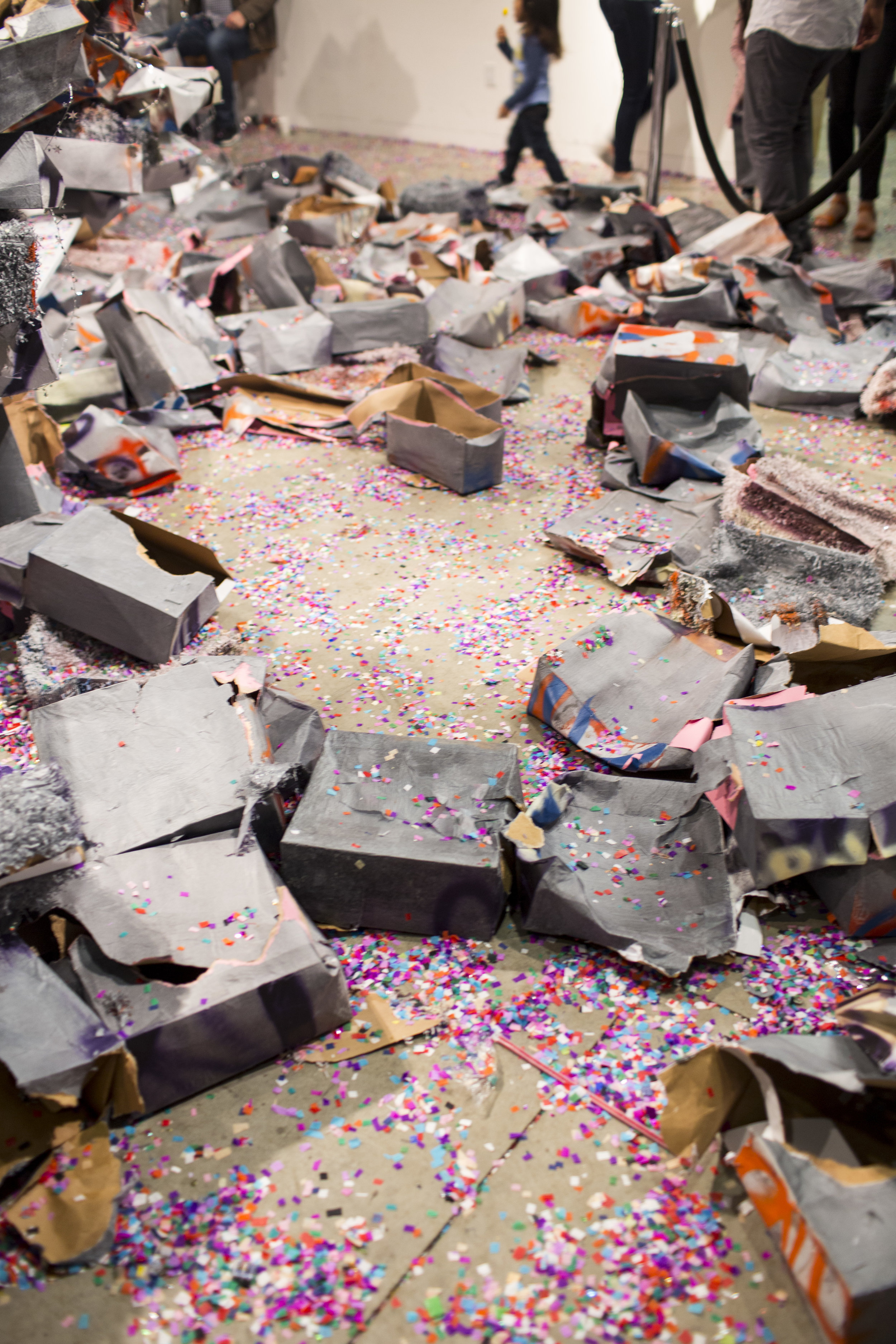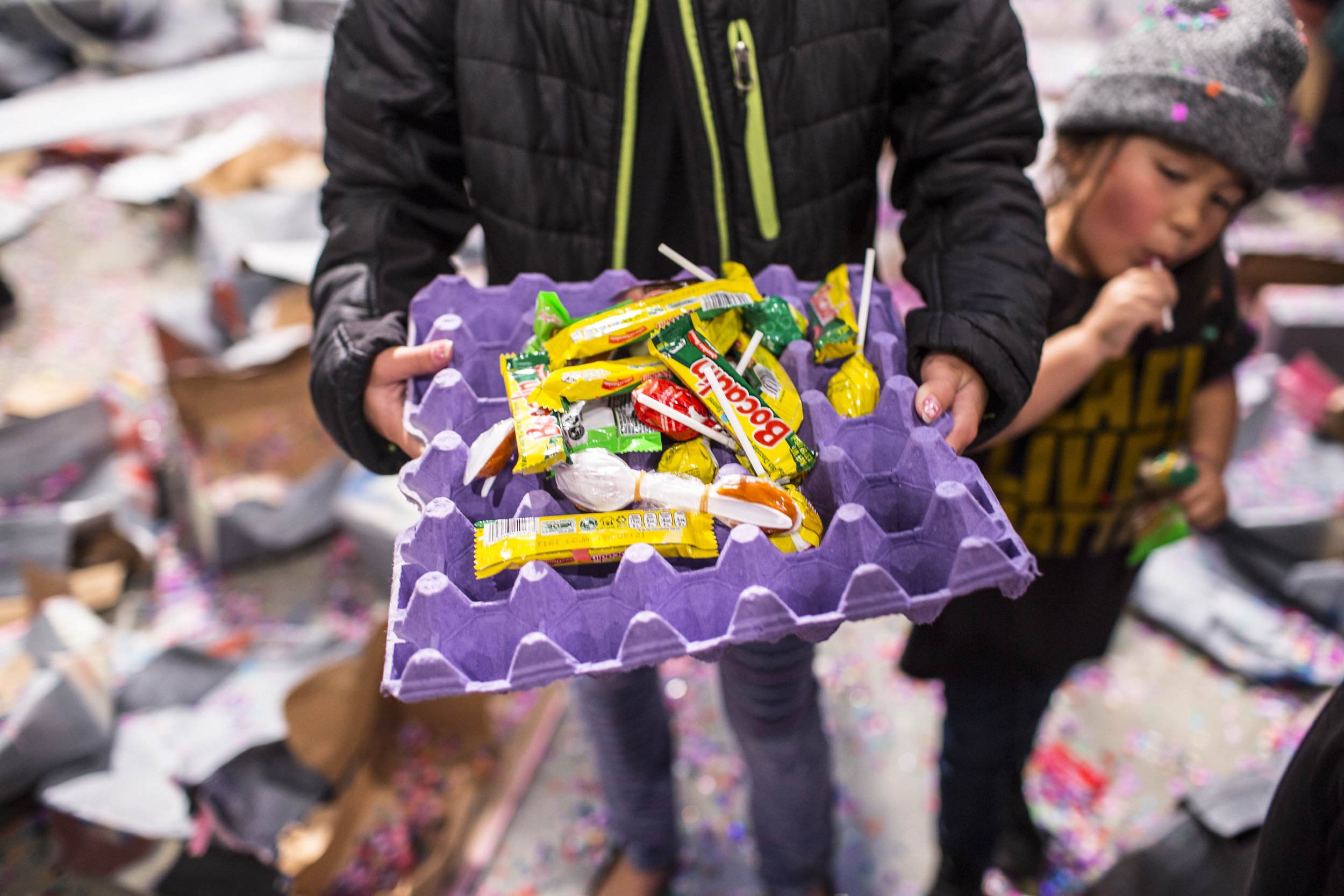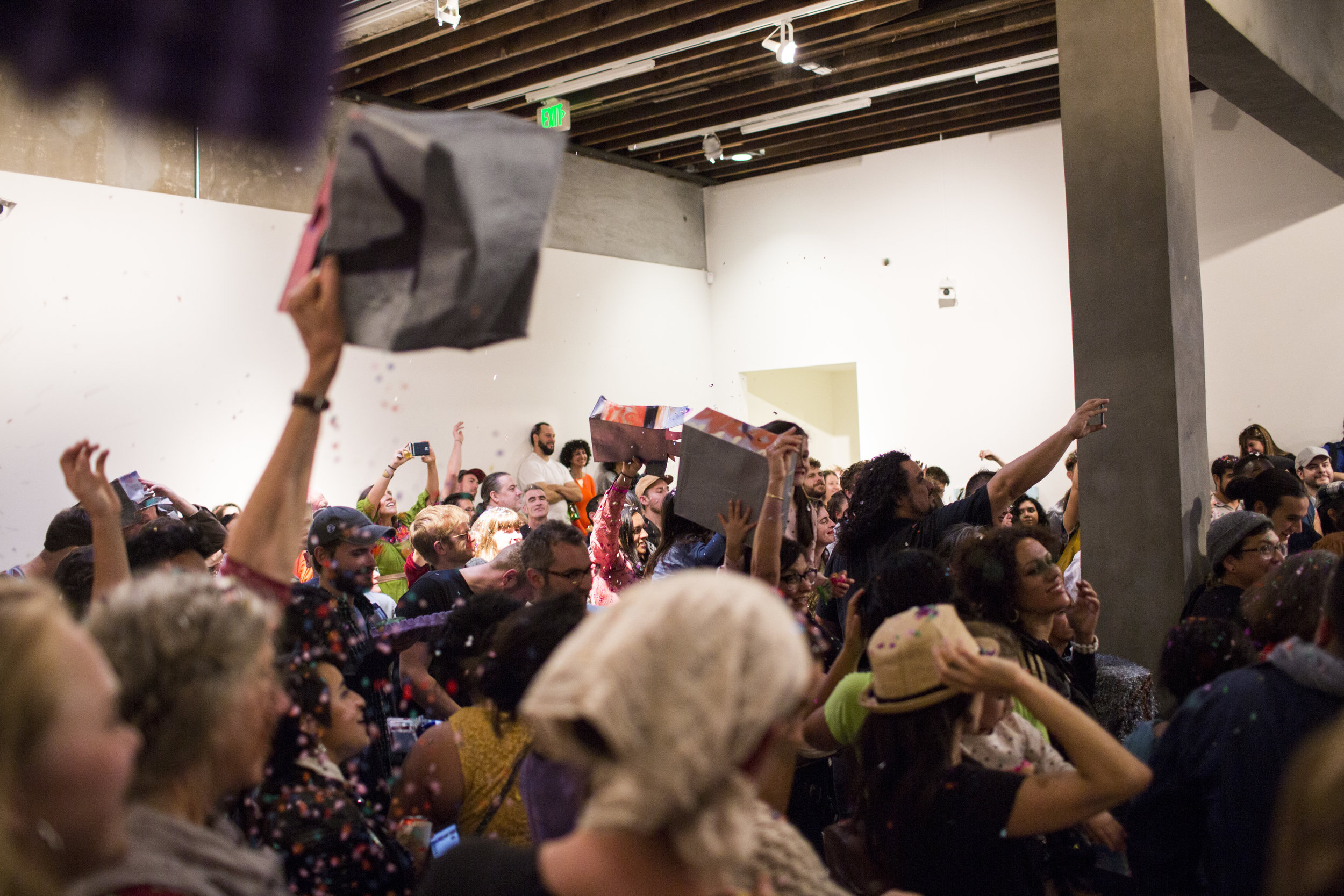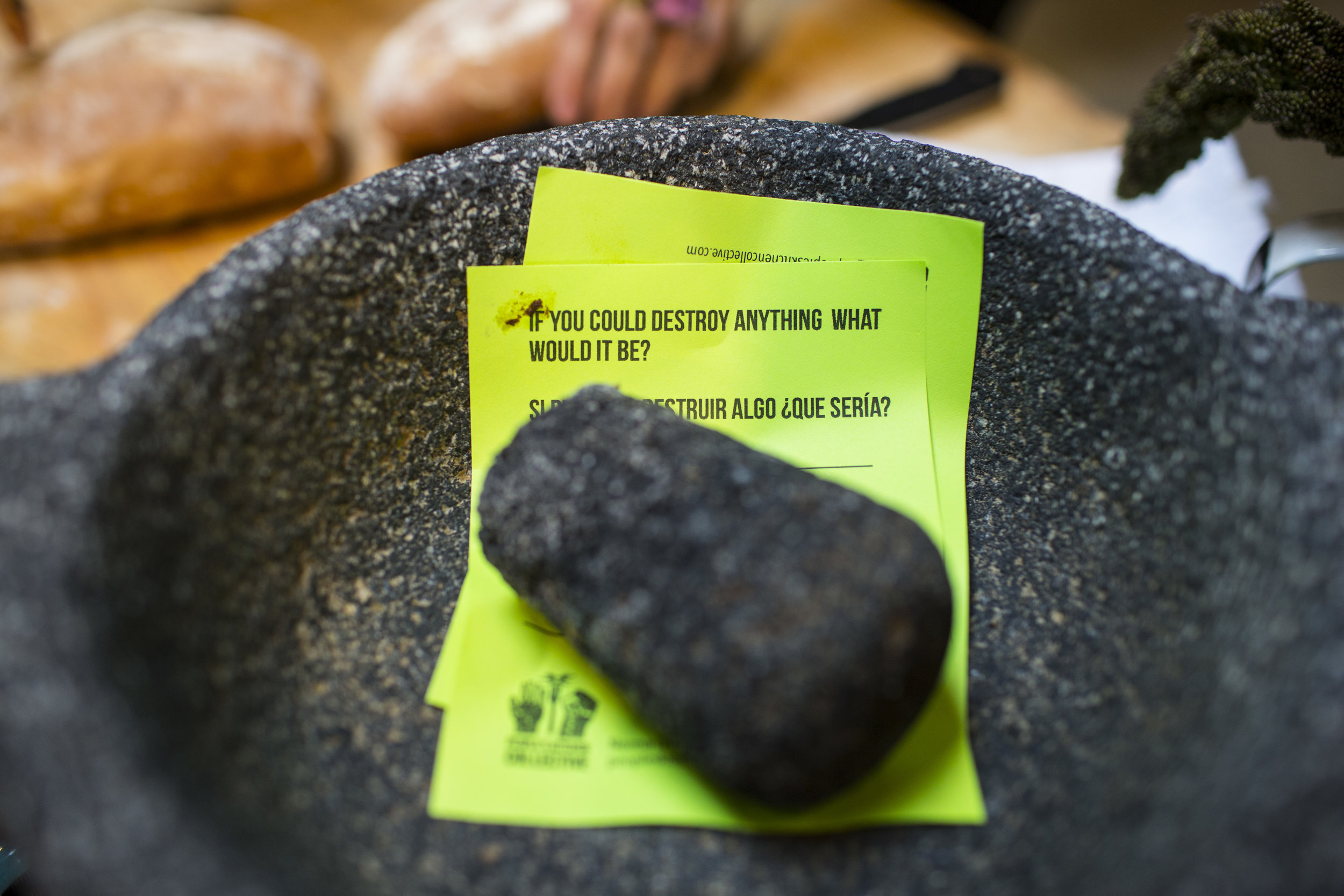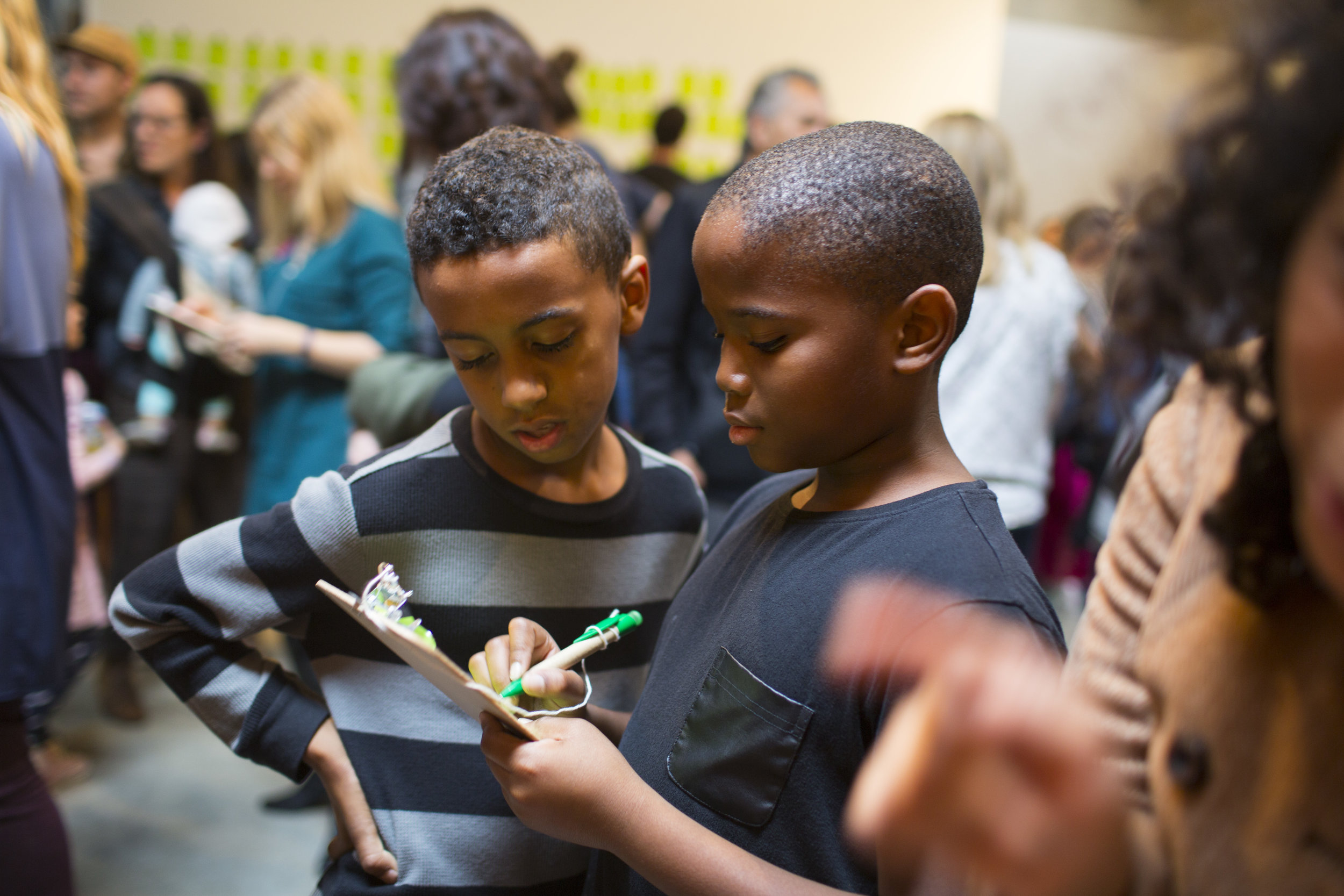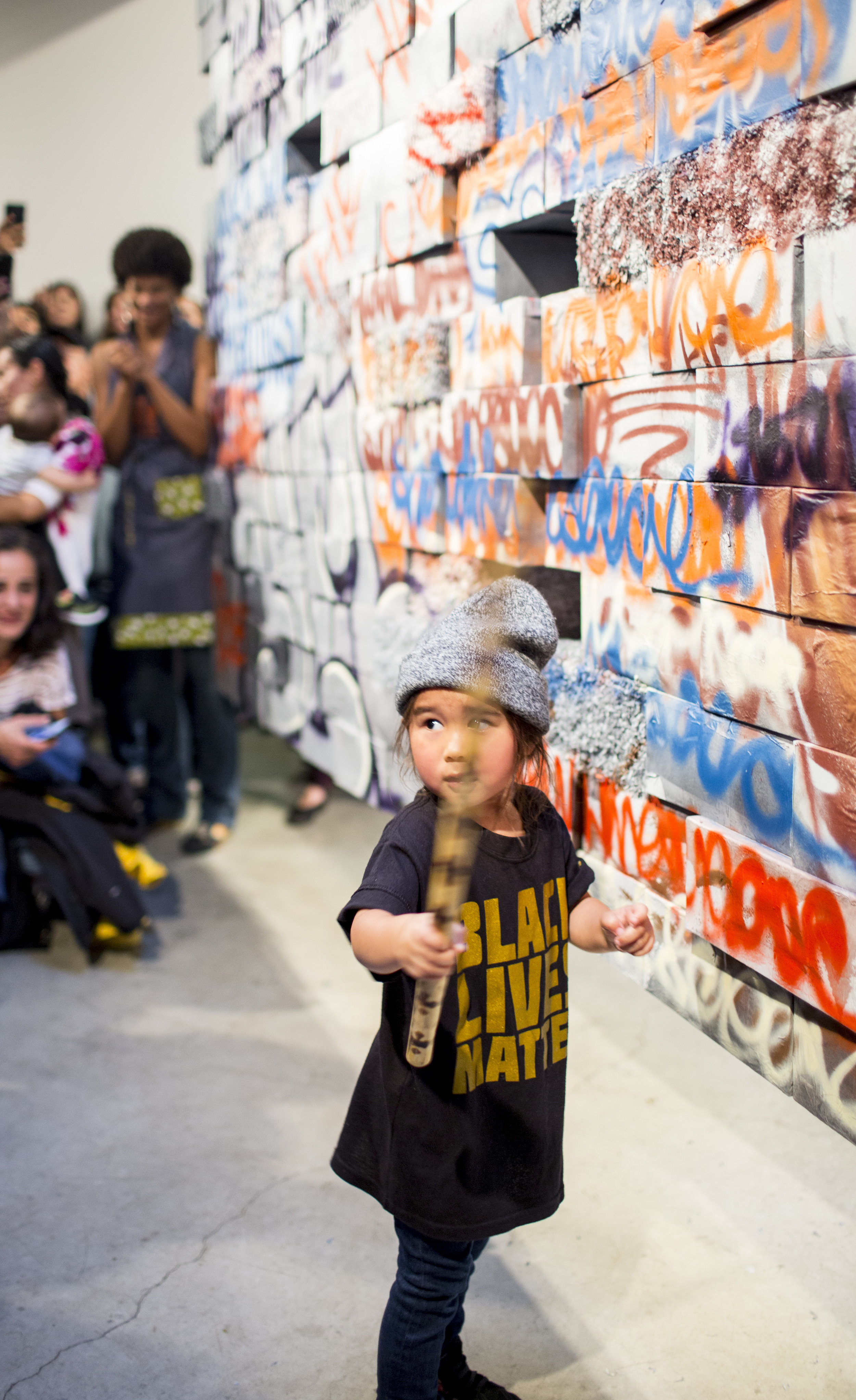Estamos Contra el Muro | We Are Against The Wall
In the fall of 2016, just before the presidential election, I set out to build and destroy a piñata made in the form of the proposed border wall. Curated by Michele Carlson at Southern Exposure in San Francisco, the wall changed from the opening to the closing of the exhibition. Why piñatas? I decided that if I were to build something that I didn’t believe in, it should be made of a material whose only purpose is to be destroyed. Originally an Aztec tradition commemorating the birthday of Huitzilopochtli, the piñata was coopted by Spanish colonizers as an opportunity to evangelize during the Christmas season. This seven-pointed piñata represents the seven deadly sins. The blindfold represents blind faith. Hitting the piñata is a rejection of sin and the sweets are a reward.
Initial prototypes of the piñata wall were made by Ivan Padilla Mónico in Michoacan, Mexico. To practice moving bricks, I carried these back in a suitcase that eventually I displayed in the gallery. Little Piñata Maker made a scale model of the proposed border wall proportional to the height of the presidential candidate. Ultimately, the over three hundred final piñata bricks were produced in the Bay Area by Fruitvale’s Piñatas Las Morenitas, fulfilling the rallying cry that the wall be made in the US. Unveiled September 9th, 2016 as a fresh, blank wall topped with party star garland “barbed wire” it was tagged and painted with a mural by Cece Carpio of Trust Your Struggle in the following days. Messages included “No DAPL” (Dakota Access Pipeline), “BLM” (Black Lives Matter), and “Free Palestine.”
Members of Young Queens on the Rise, a neighborhood youth group, were also invited to write on the wall. One young woman wrote, “mami and papi, your sacrifice does not go unnoticed.”
CONSTRUCTION | OPENING CEREMONY
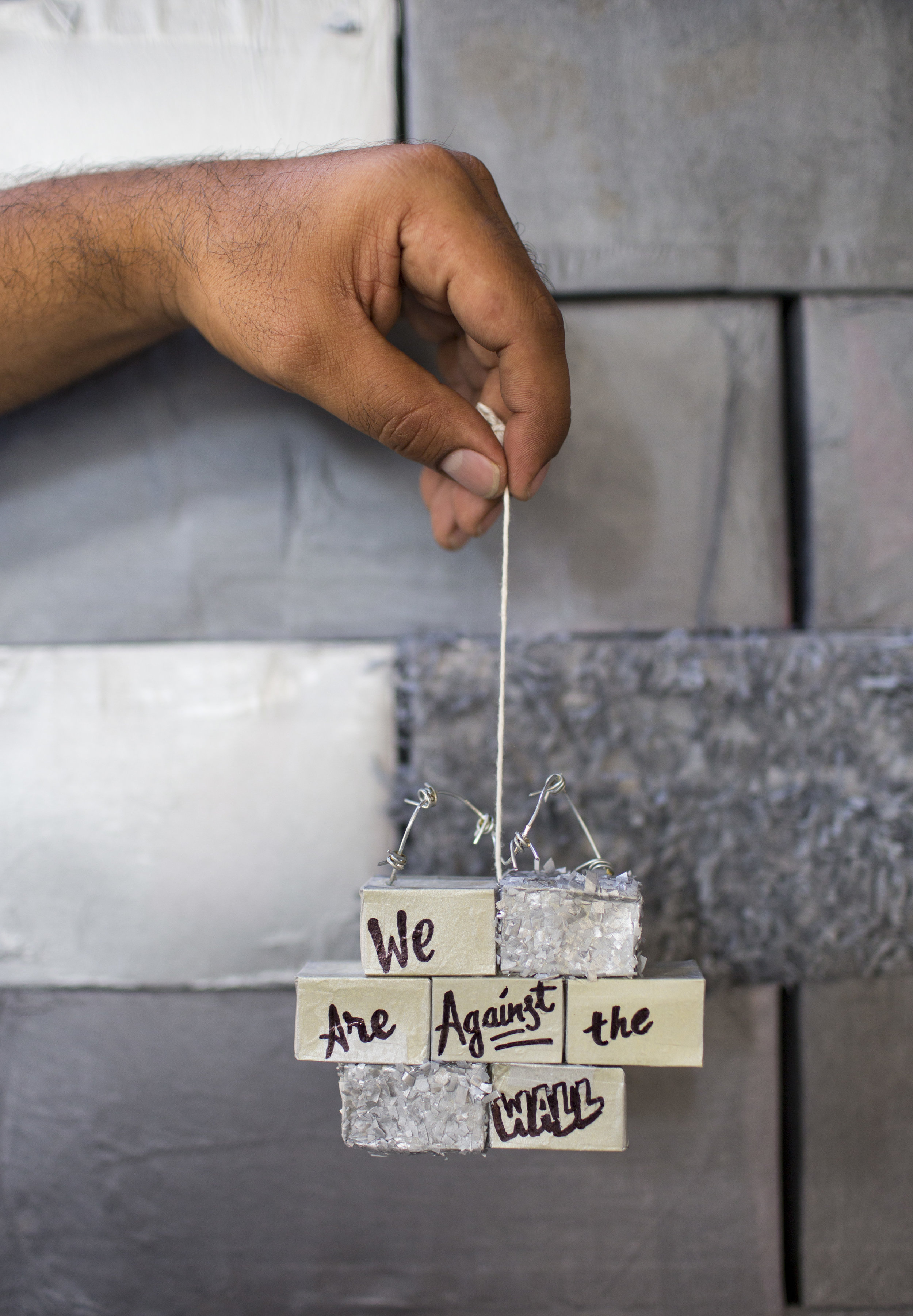
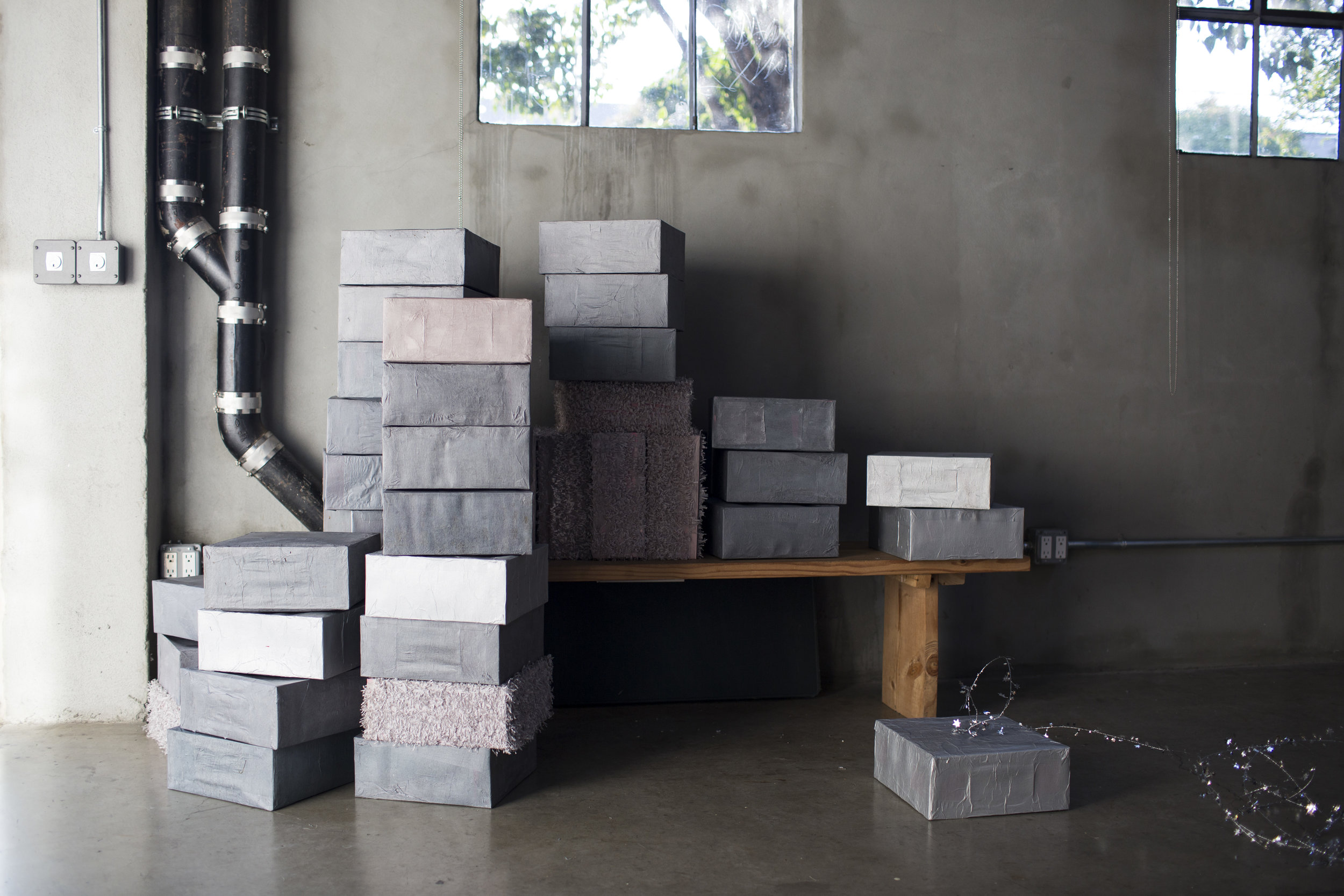

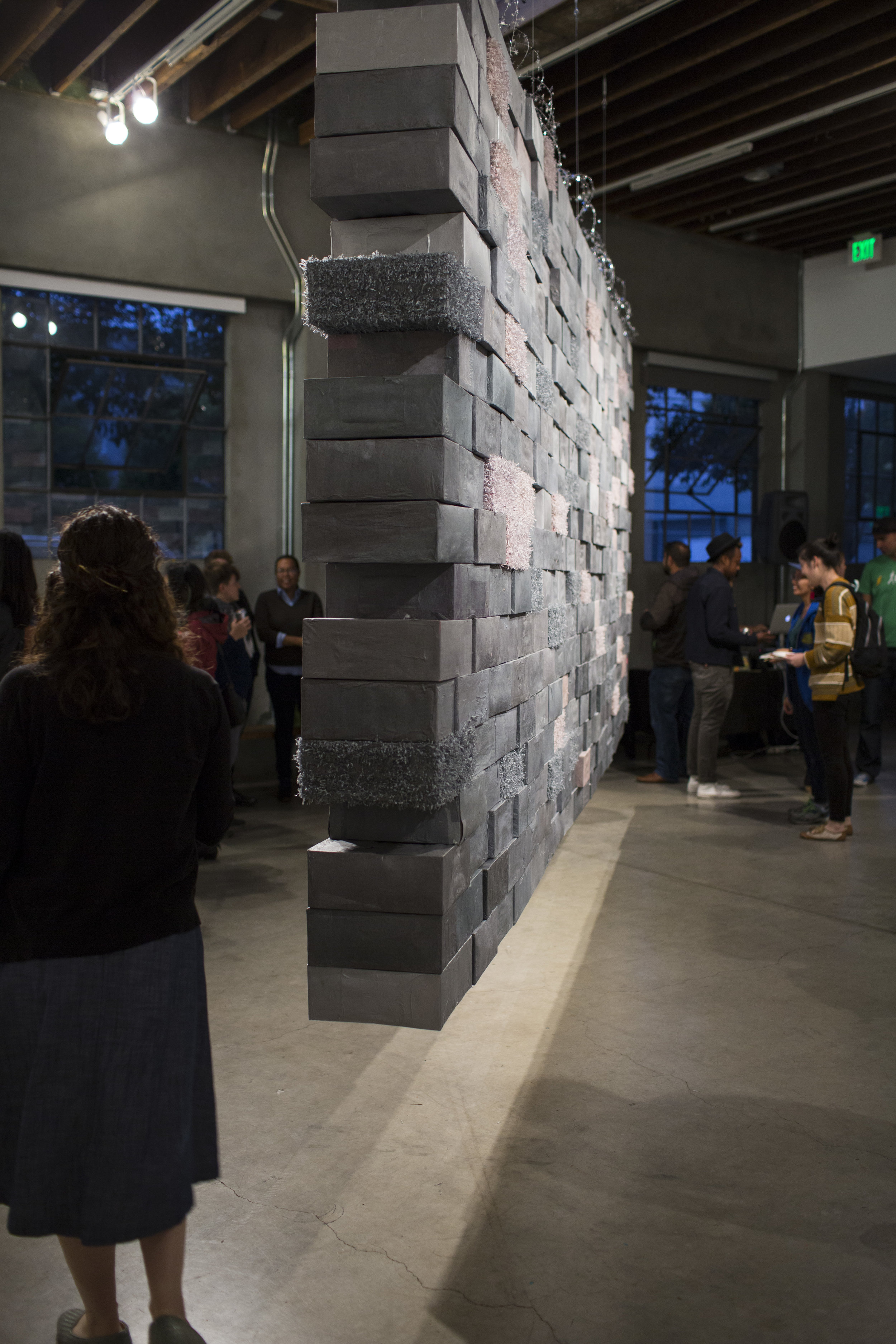
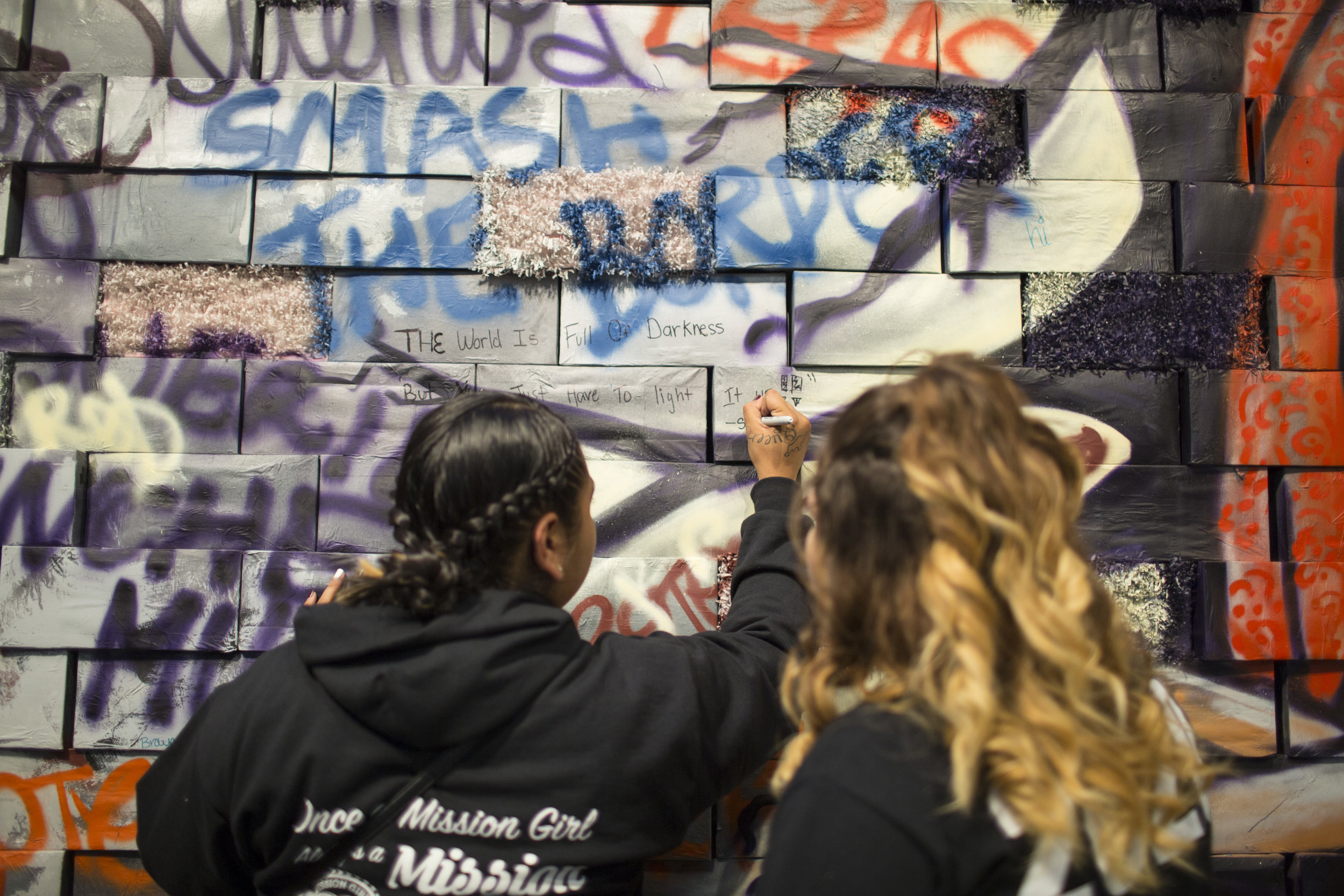
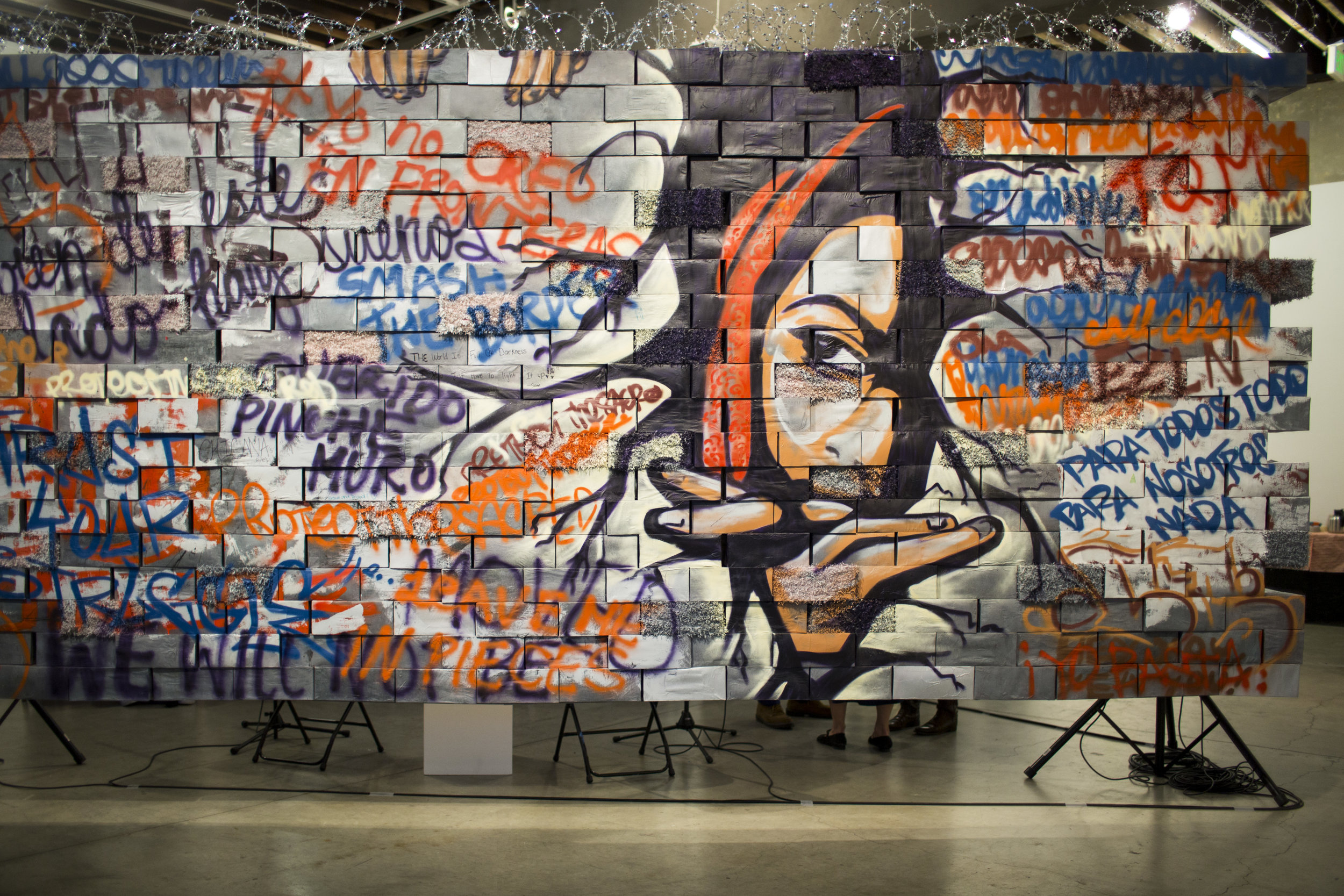
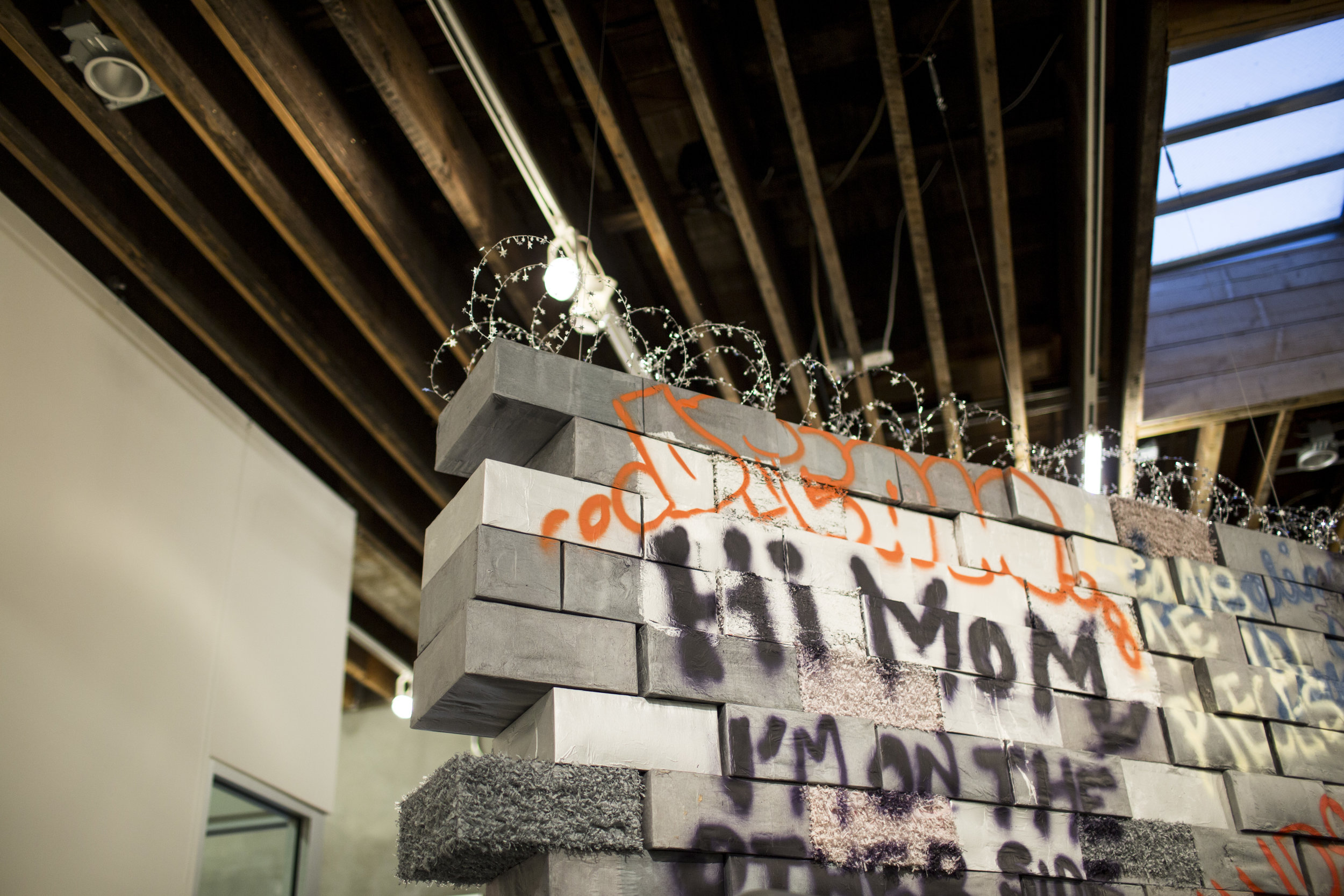
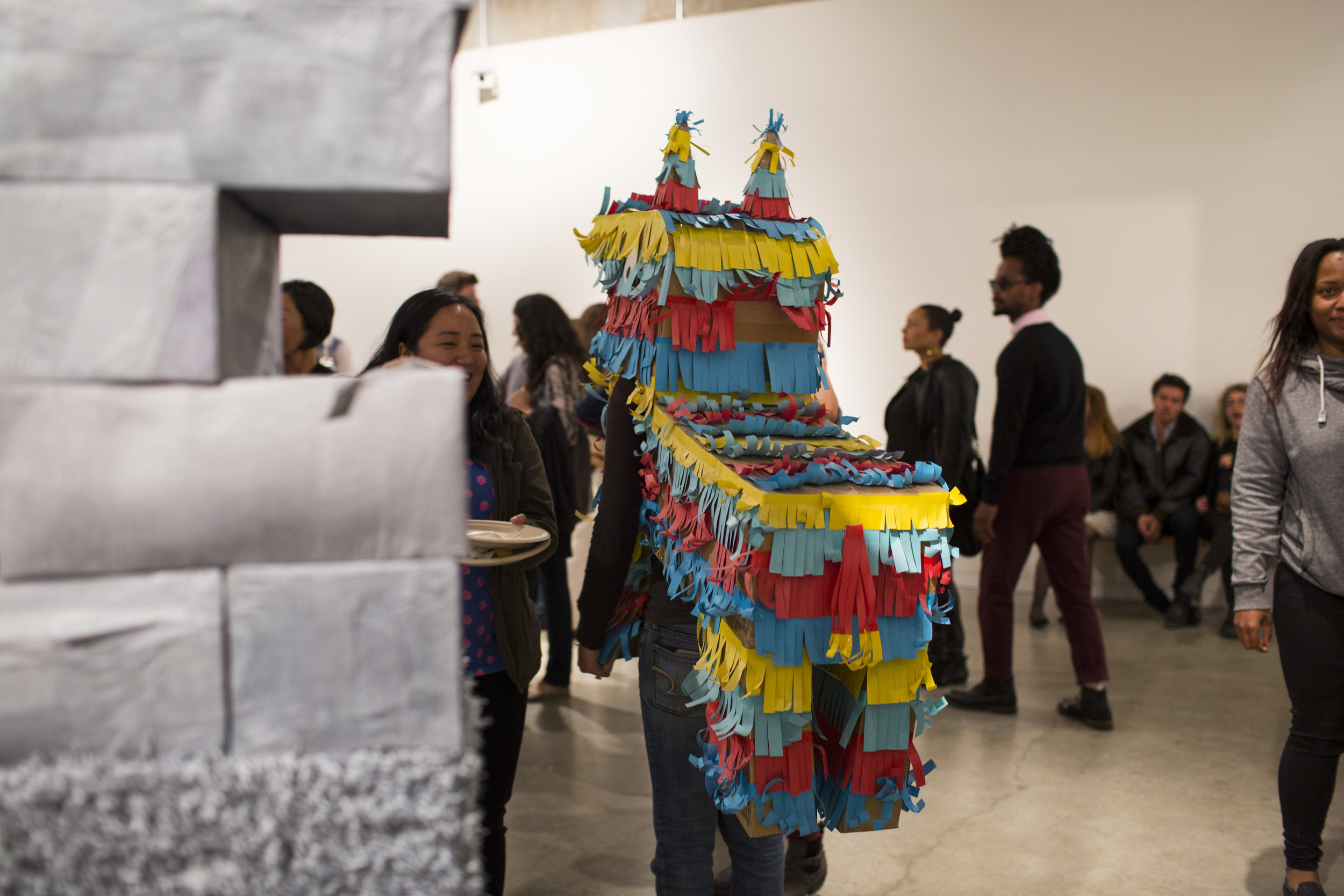
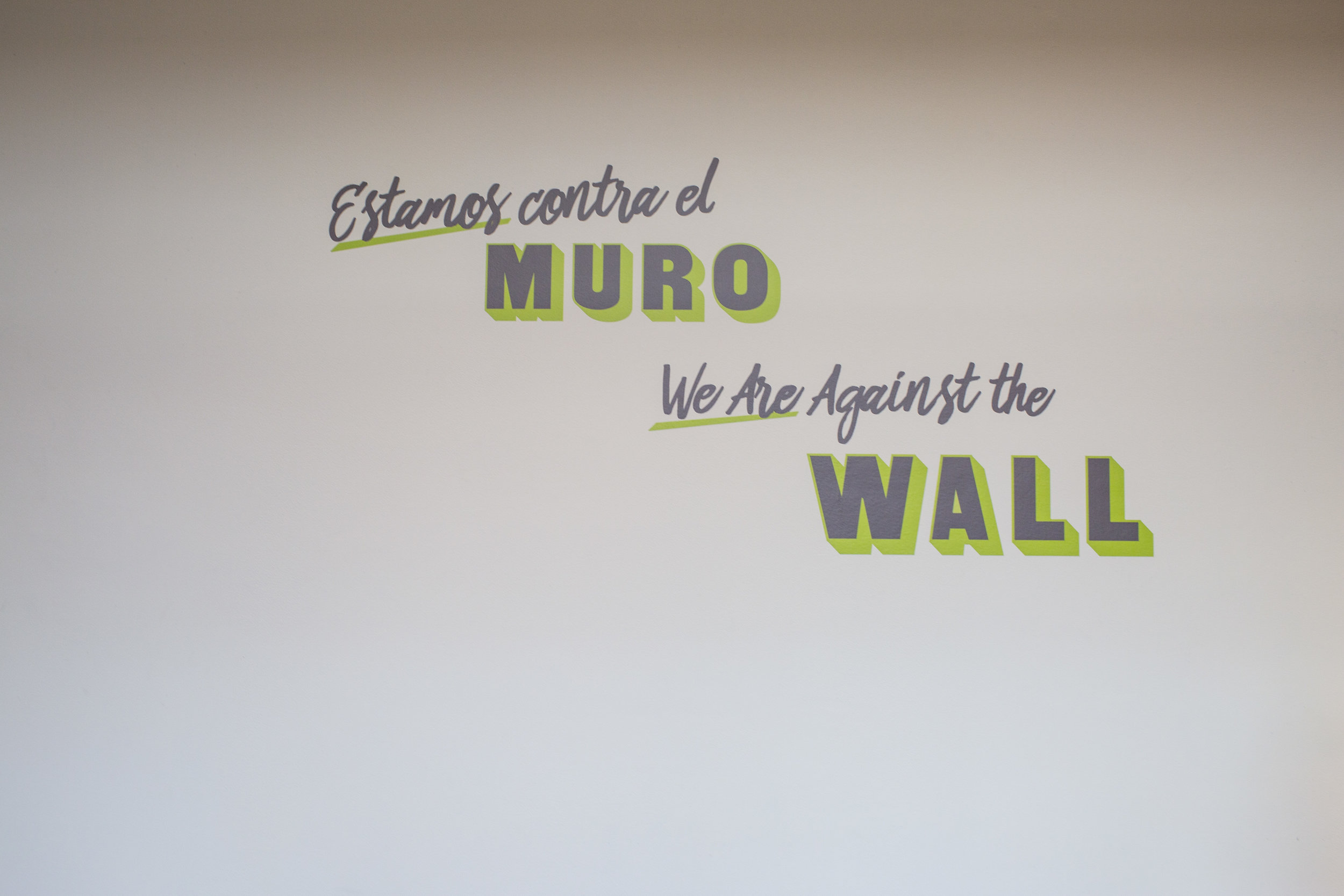
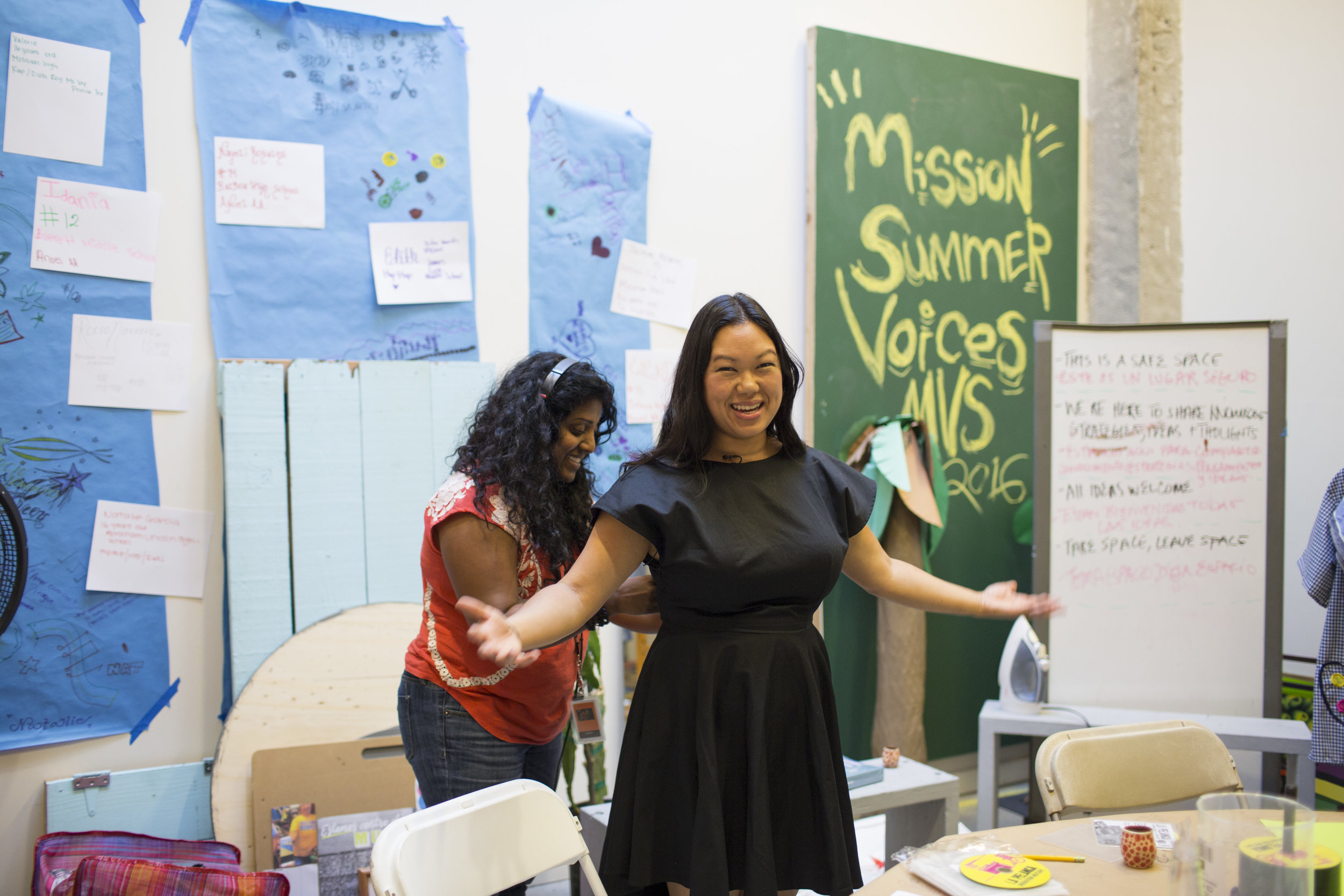
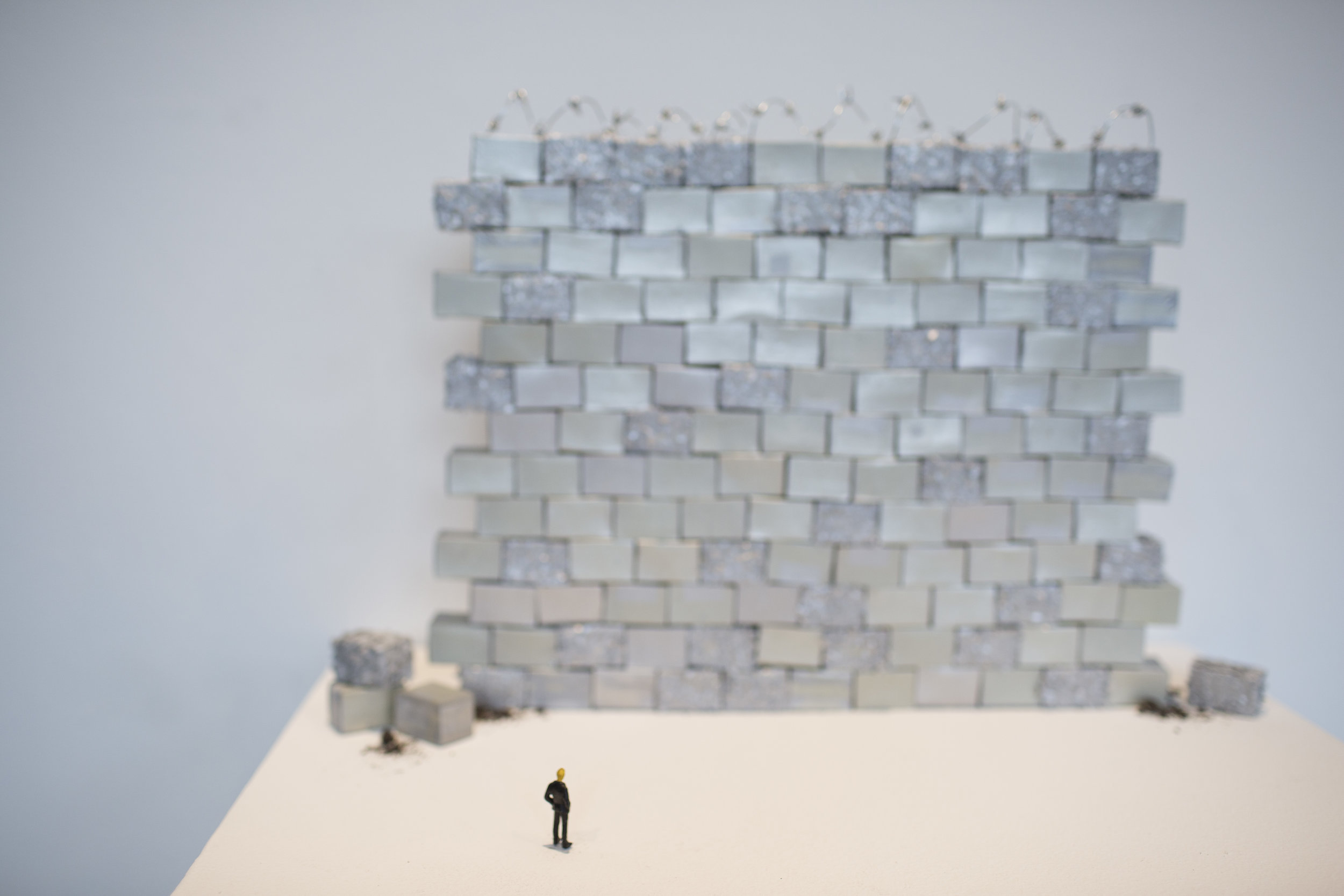
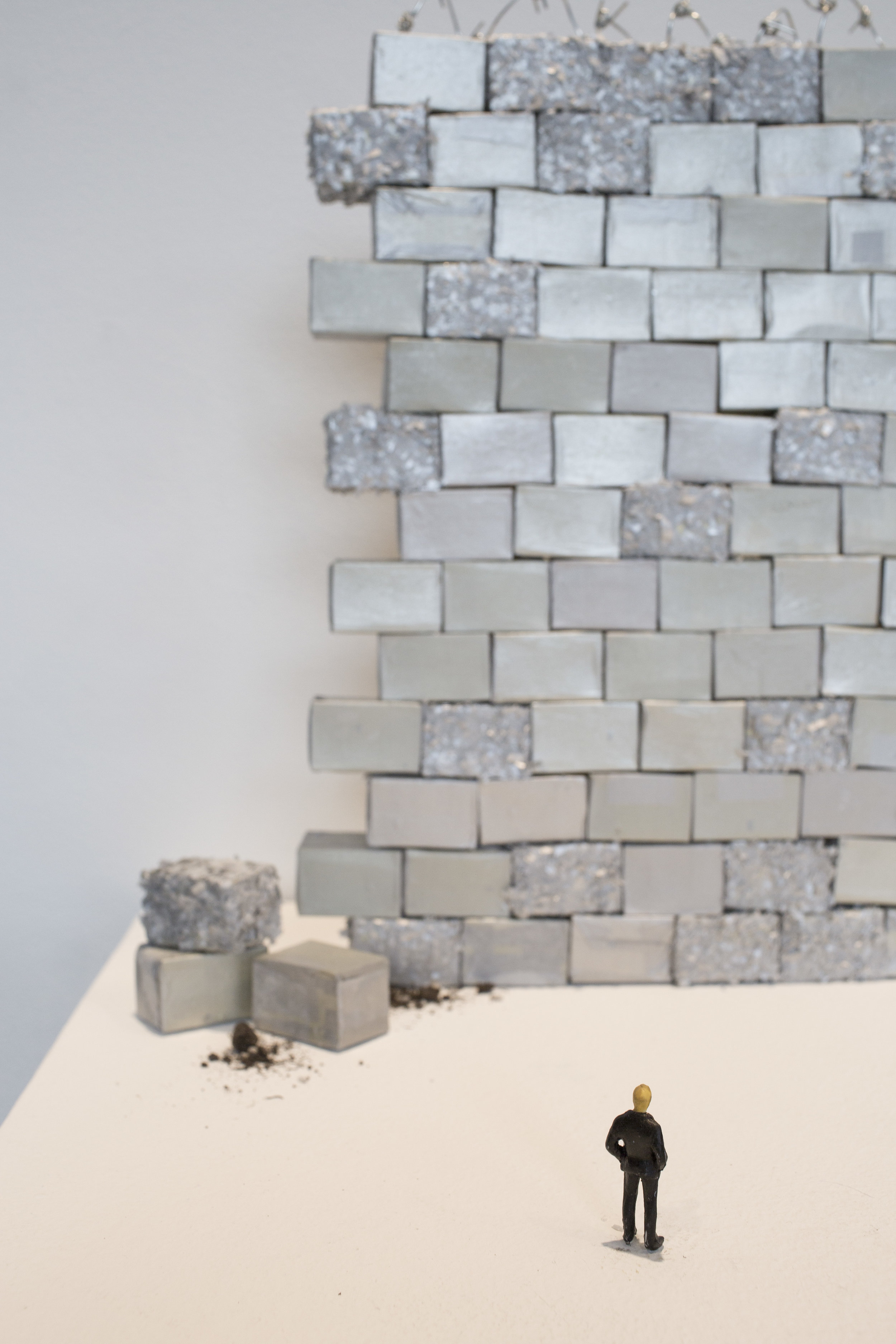

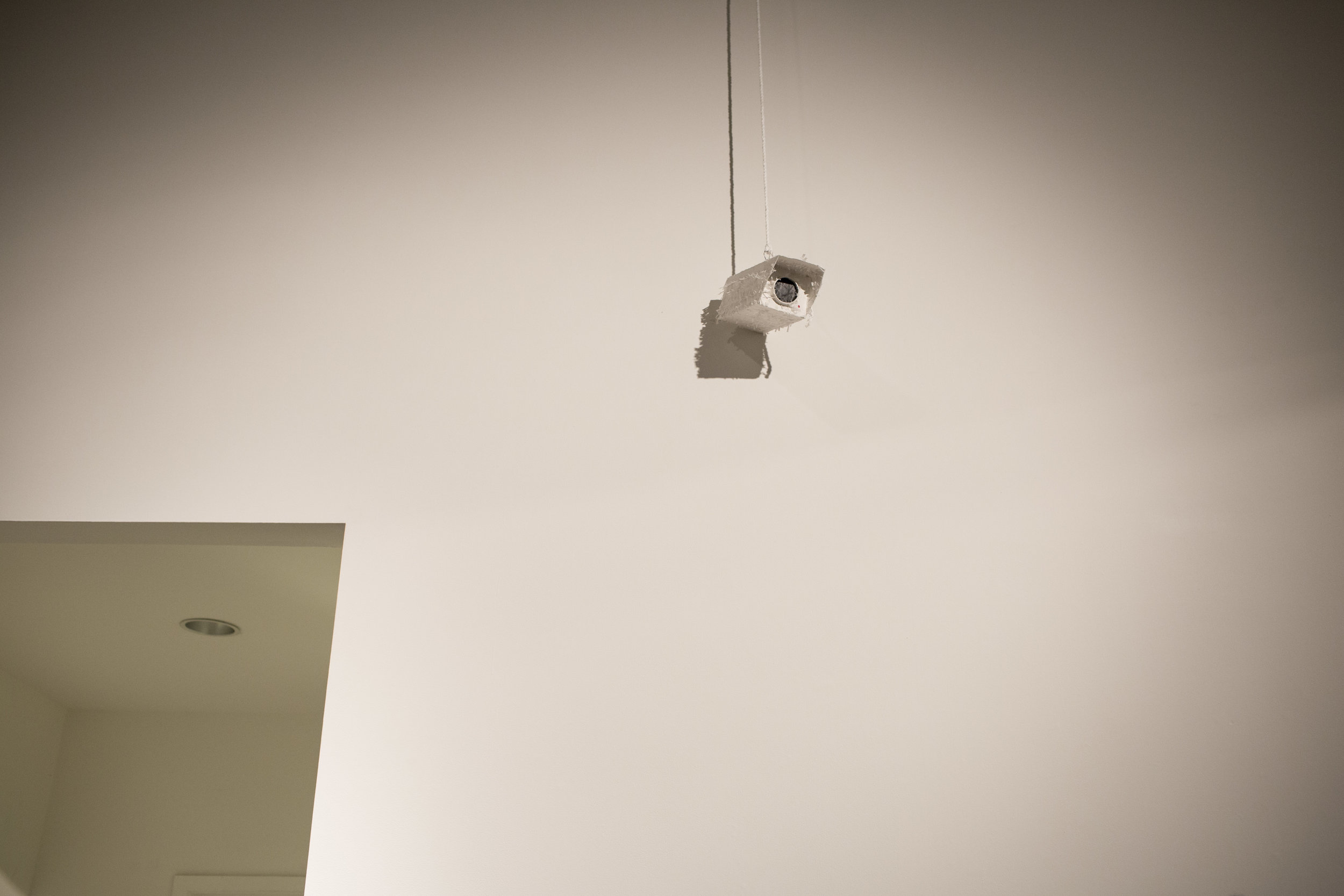
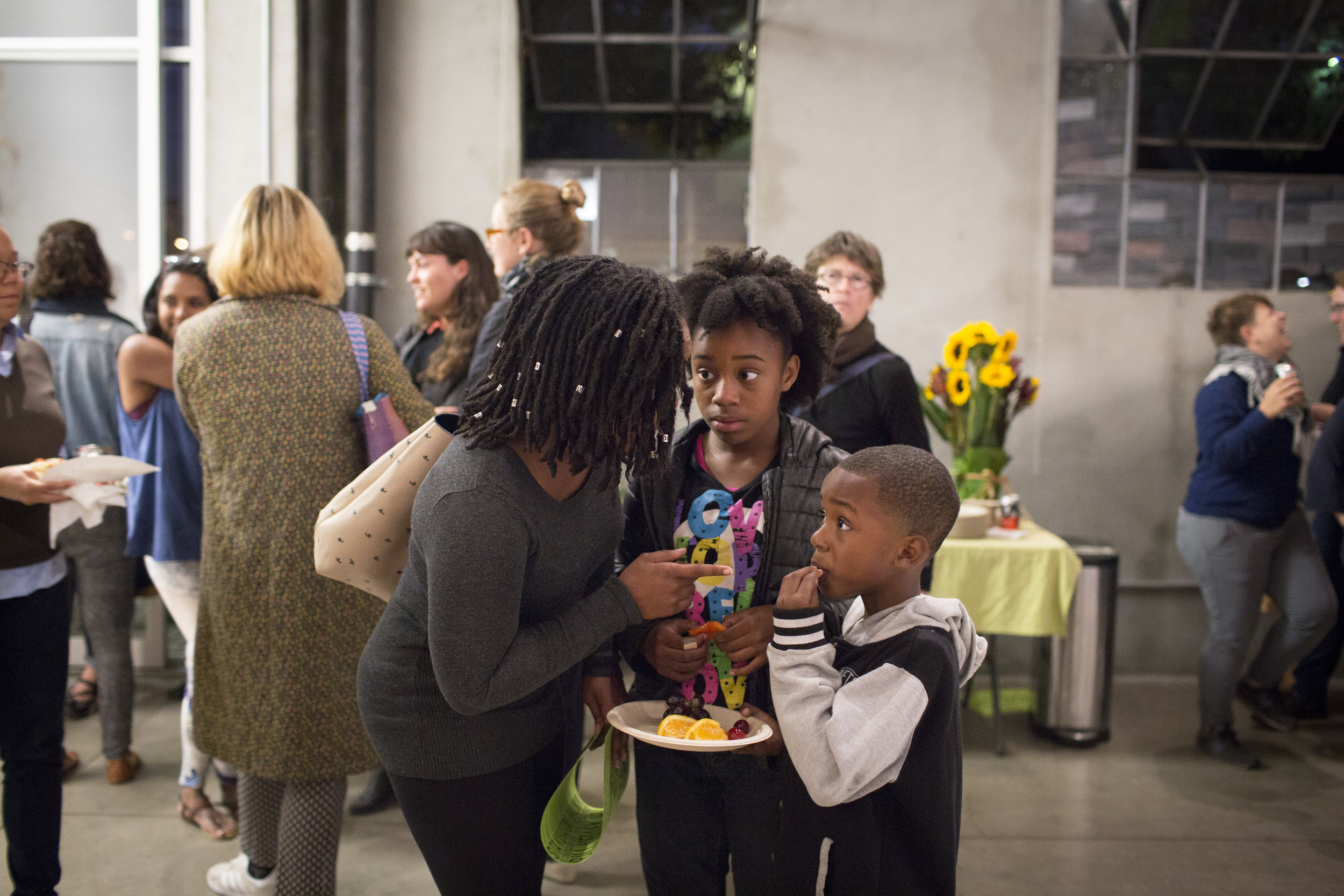
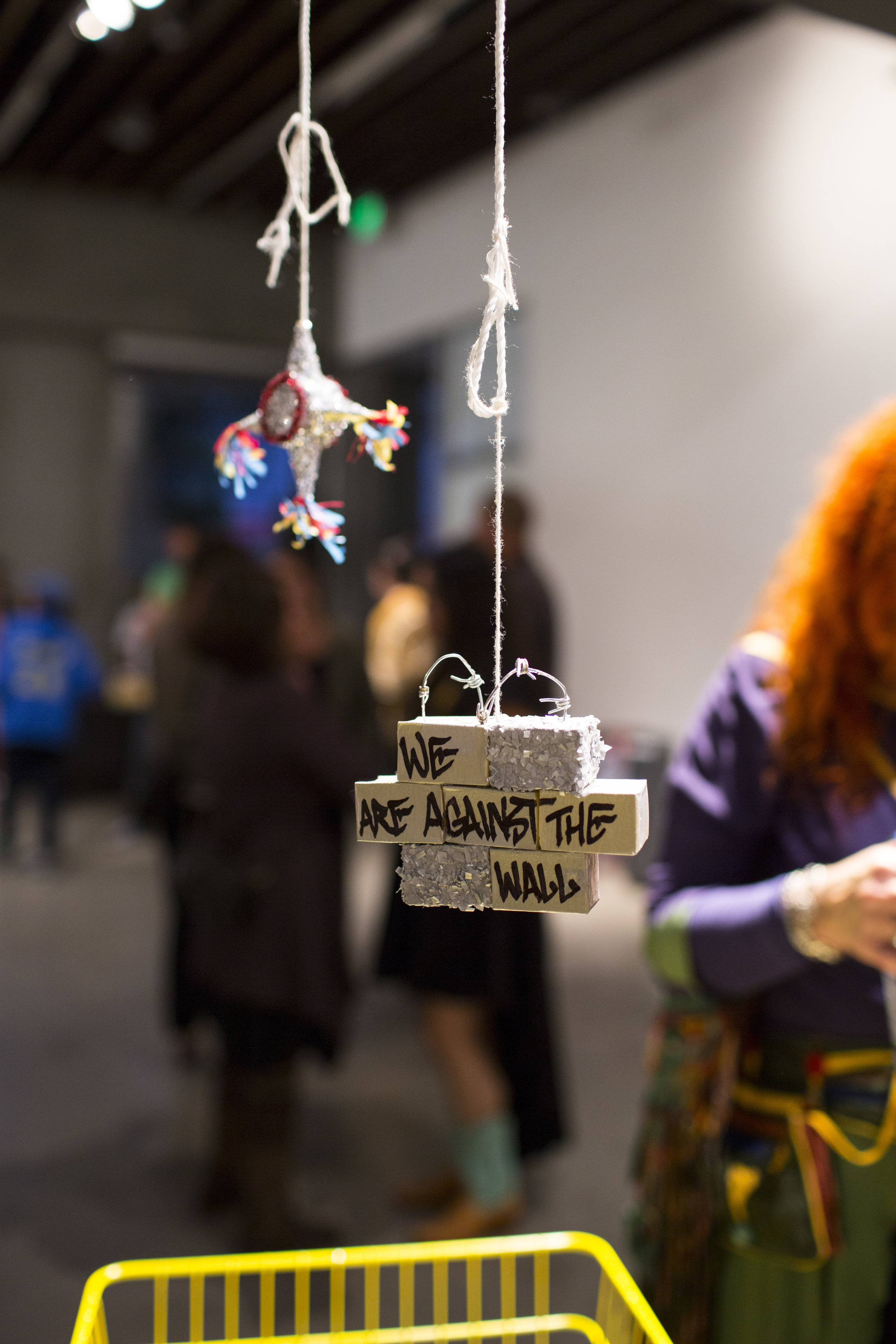
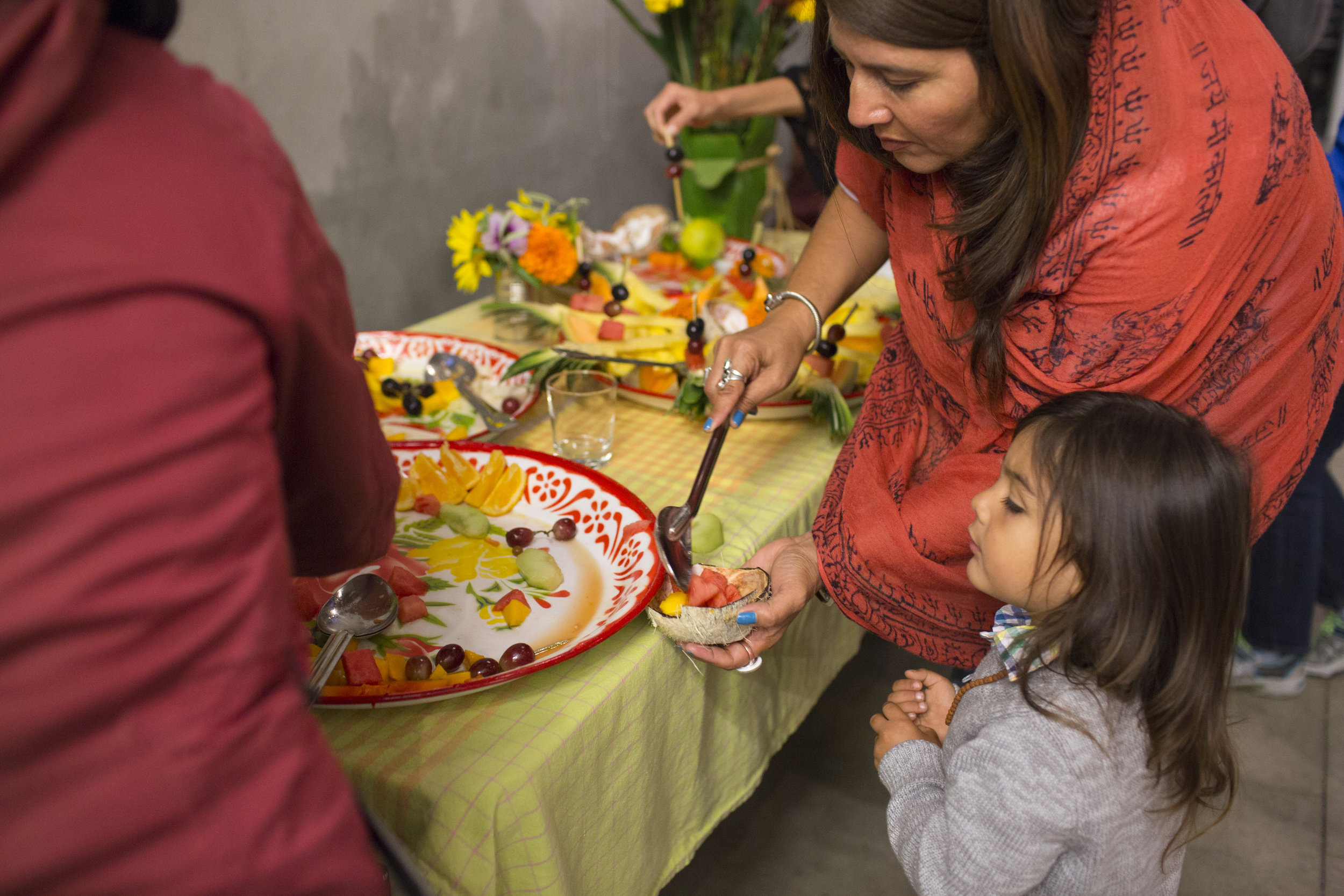
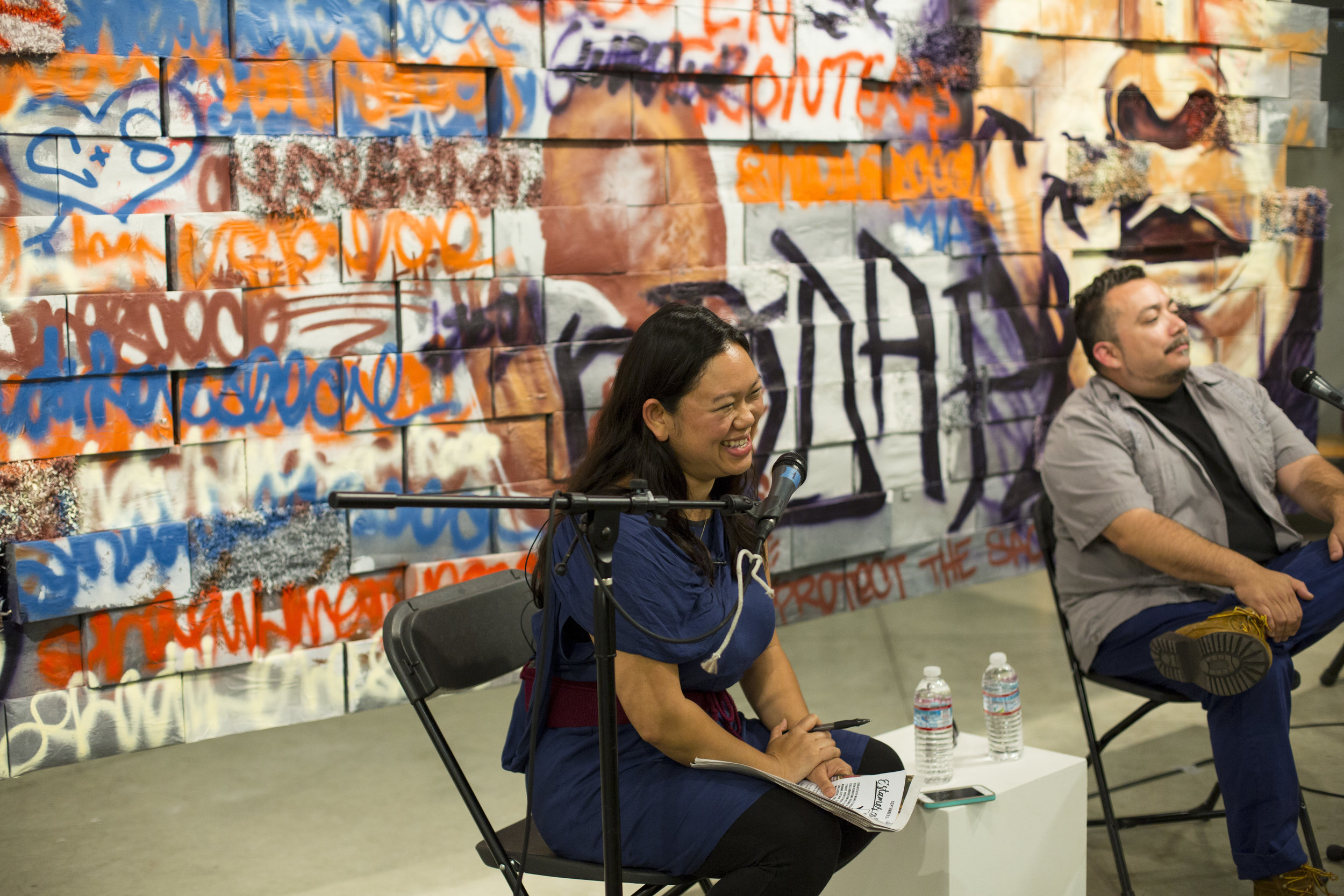
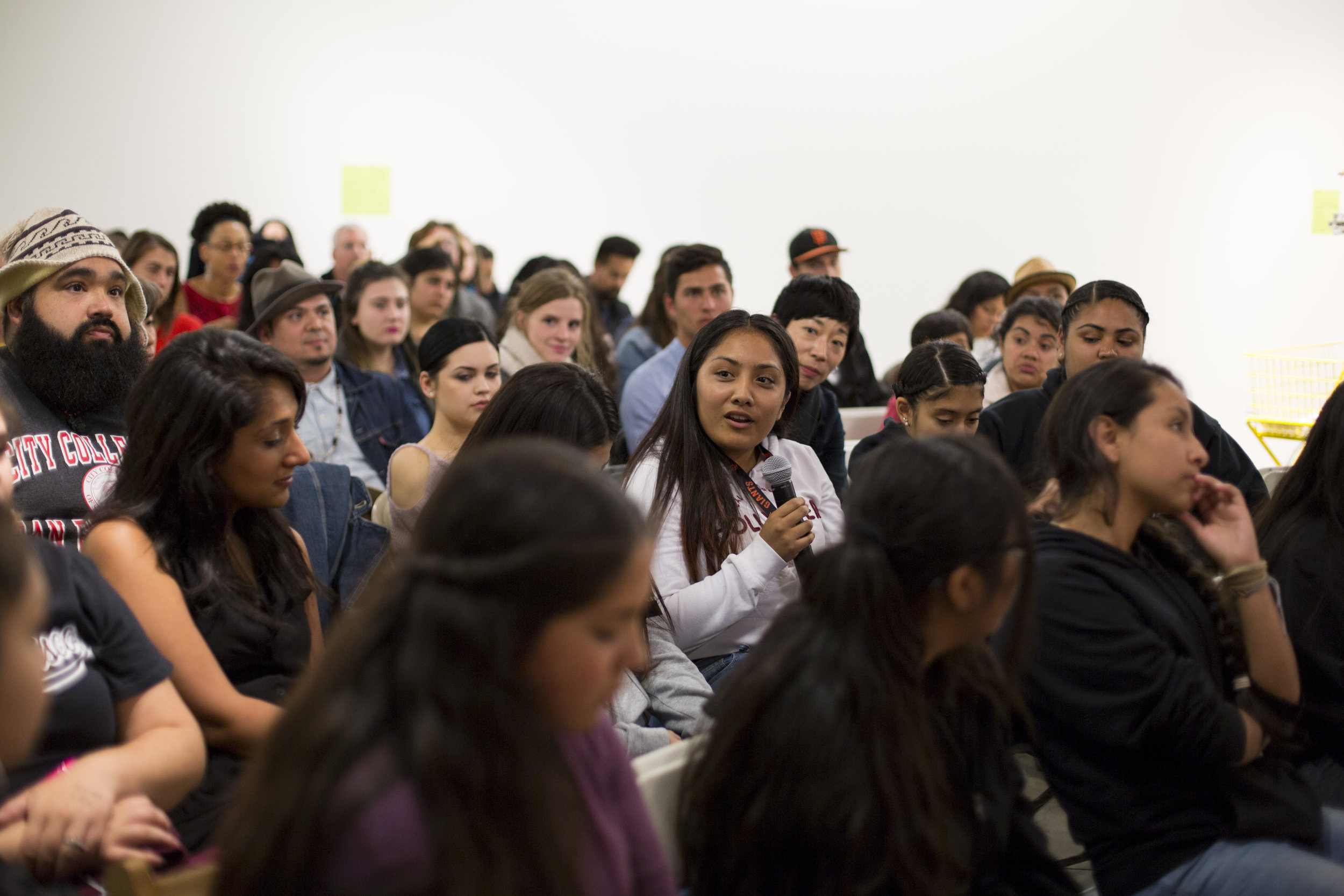
During gallery hours, sounds of the US Mexico border recorded by Dignicraft played in along with a migration mixtape for sale by DJ collective La Pelanga. Seven security camera piñatas filled with hot sauce packets looked on to the space. I was inspired to make the security cameras after reading a terrifying quote by a security manufacturer saying that the wall of the future would be made entirely of cameras. Halfway through the run of the exhibition, we held an artist talk on both sides of the border wall with collaborators and food by Mission tamalera Doña Lupe.
In preparation for the fall of the wall we filled five hundred eggshells with confetti to make cascarones. We nixtamalized corn to make guajolotas, a tamal-stuffed torta substantial enough to fuel a border crossing. I commissioned a cake in the shape of our border wall –also meant to be destroyed—in honor of my friend’s daughter’s first birthday. She said, “That’s my baby’s piñata". During the closing on October 15th it rained, squeezing hundreds of people into Southern Exposure.
One of the first groups to arrive was a Palestinian youth delegation. One of the young men had been staring at the wall for a long time. When I introduced myself, he told me that he and his friends had wanted to join the event to support migrants, but he had no idea that the wall would also read “Free Palestine.” He kept thanking me as I tried to introduce him to Cece, who was standing nearby and had actually written those words. He said, “You know this wall looks more like the one in Gaza than the one on the US Mexico border.” The apartheid wall in Palestine was gray cement covered in graffiti and topped with barbed wire. I had referred to them as a reference. The wall on the US Mexico border is most often vertical metal slats and fencing. “What if you did this project in Gaza?” He asked me before he rejoined his group.
As more people arrived, Norma Listman, People’s Kitchen Collective and I passed food through a loose brick in our imagined border. Son de la Bahía played son jarocho, Poet and public theologian Marvin K. White invoked love into the wall. As is the custom, we invited the youngest members of our community to take a swing at the piñata first. One person chose to take out a few bricks with his skateboard instead of a stick. The wall had come to represent more than the paper and wheatpaste it was made of. I had never experienced the simultaneous and collective feeling of creation and destruction in the way that I did on that day. One person turned to me at the end of the night and said, “Thanks for the practice!” Together, we turned something that was supposed to keep us apart and created something that brought us closer together. For the trust, intention, love, care, anger, joy, and creativity of every person who showed up, I am forever humbled.
DESTRUCTION | LA CAÍDA
